
An Interview with Canadian Natural Perfumer Lyn Ayre
Passion For Perfume
Coeur d'Esprit Natural Perfume
Hi, Raphaella, and thanks so much for asking to interview about my passion for perfume.
Can you tell us briefly about yourself?
Early in life, I learned that scent had the power to heal, soothe, capture the imagination and make my spirit
soar. I’ve been hooked ever since. By nature, I am a teacher with a creative soul at my centre and a
strong Spiritual connection to both Source Energy and to Gaia, our Mother Earth. Over the last thirty
years, I have taught hundreds of people worldwide a variety of spiritual and holistic-based modalities
through the sixteen courses developed through my personal training and experience in this field. I hold
several dozen certificates in the Healing Arts and in 2005, I earned a Ph.D. in Energy Healing. Working
from my home office in British Columbia, I teach several dozen students at any given time, both through
correspondence and in-person courses, on various subjects including Natural Perfumery.
Each day is different as life is very full and eclectic. I start off with meditation and Reiki self-healing, have
breakfast and a shower then check on my brews to see how they smell today. I may go out and harvest
then dry some herbs to make a herbal remedy for a client I’m seeing that day; I spend about two to three
hours in the morning answering email from my correspondence students; clients may come for energy
sessions; a student may be here for the day. Or, I may end up writing, creating an Energy Fractal or a
CD of the sounds of the Tibetan Singing Bowls. There’s never a dull moment around here. Life is full of
people and purpose and I love it. Having gone through several severe health issues over my lifetime, every moment I’m given is appreciated and life is lived it to the fullest, squeezing out all the joy, love, peace, and light therein. Continuing with my education, I am a quarter of the way through a three-year Master Herbalist
diploma program. I am married to a great guy and we live with our wee dog. We have three children and six grandchildren.
Could you please tell us a bit about your background leading up to your career in natural perfumery? I was introduced to Natural Perfumery through a course I took on Aromatherapy in 2003. I enjoyed several more courses on that subject and read over a dozen books. One of my teachers told me that my remedies smelled more like perfumes. (My thinking was - if it smelled good, the clients would be more compliant. I continue on in this view with the Herbalism – if it tastes good, they will take it lol ). This idea got me to thinking about making my own perfumes.
It literally became an obsession. I could not sit still to watch a movie on TV. I had to get up and get playing with my oils. I began to amass a wonderful collection of essential ingredients and tincturing various botanicals. I published a new page to my website and began to receive orders. I put together a little half-day course on making perfumes. My friends and family were delighted as several of them were no longer able to tolerate commercial scents and were saddened to have to give it up their favourite perfumes. Knowing there was a more natural way to go gave them a great feeling. Those same people keep coming back for more. Naturally, the more I’ve read, studied, and practiced my technique has improved and today, almost six years later, I consistently get good reviews from my clients. I now have a dedicated website and a blog, though with all the herbal studies, I don’t get a lot of time to write on it. I’ve also created a six-month course (though some are taking longer), which can earn continuing education credits for Professional Registered Aromatherapists in BC. When the student achieves his or her Certificate of Completion for the course, it will satisfy the requirements for their CEC’s.
Can you tell us about Natural Perfumery and how you relate to it?
Whatever my pursuit, I do it from a spiritual perspective and perfumery is no exception. I am not interested in becoming a commercial perfumer rather, I appreciate small limited contracts. I do not necessarily consider myself to be a professional nose, though I do have a particularly good one. Nor am I trying to prove that naturals can be as good as synthetic perfumes. They are different, that’s all. Some people can appreciate the naturals and some enjoy the synthetics, which also use natural ingredients; some love both. There is no judgment here. When I decide to create a new scent, at some point early on I will connect to the spirit of the plants I want to use. I see them in their natural habitat – in the heat, the humidity, the cool breezes, the wetlands, or the mountains. I imagine their aroma and how one would go with another. I make some notes. I might create an Energy Fractal or play a song on the Tibetan Bowls. I may even write a story or a poem. I might just dive right in and begin playing around in a carefree manner. Usually, though, the perfume is all created in my mind before any bottle is uncapped. Because I can imagine the smells in my mind, even if I were to develop Anosmia I would still be able to create perfume. (personal note: A dear friend of mine has lost her sense of smell due to Parkinson’s Disease, which has caused me to think about this.)
What led you to perfumery, especially natural perfumery?
I was led to this path by that simple original comment my teacher made and, once finding it, there was no turning back no matter what. Learning to appreciate essential oils through the art of Aromatherapy, then realizing that I could make perfumes that would also work on a healing level fit right in with who I am in this world. Throughout my life, all the delicious smells in my world conspired to take me to the depths of their soul and expose me to the rich olfactory tapestry that life offers. I cannot imagine a life without scent.
Tell us about the fragrances you’ve created.
Honestly, I am not the type of perfumer who spends years creating a single fragrance and putting my heart and soul into one scent. That’s just not me in anything I do. What about all those other perfumes in the ether that are crying out to be manifested onto the planet?
My top three favourites so far are:
Afterglow - includes a raunchy accord of Hyraceum, Jasmine, and Orange Blossom absolute, heart notes of Frangipani, Orris, and Rose, and head notes of Turmeric, Pink Pepper, and Bergamot. Deep, complex, sexy.
Citrance - features Lavender absolute accompanied by Chamomile, and Litsea Some of the top notes are Bergamot, Key Lime, and Ginger. Base notes include Cedarwood and Vetiver, among others. Fresh, herbal, long-lasting.
Angel Whispers - begins with a feathered brushing of Bergamot, Orange, and Black Pepper, which leads the way to an open powdery field of French Lavender and Geranium as well as fruity notes of Davana, Caraway, and Osmanthus, and a delightful dash of chocolate. Etheric, edible, yummy.
What is the oddest ingredient that you have used in perfumery?
If I am using it in a perfume, I don’t really consider it odd. As long as it is safe, can add something to the mix, is an ethically harvested animal-essence like ambergris, honey beeswax, or hyraceum, and is a non-poisonous botanical, it’s okay to use. For those readers who do not much about perfume ingredients, I would say that Hyraceum would be the most unusual ingredient in my formulae. It is the petrified excrement stones of the Rock Hyrax in East Africa. It is used in African medicine and can be purchased at Pharmacies that specialize in this component. Collecting these ancient stones, long-since separated from its owner, does no harm to the current-day Hyrax. The aroma is somewhere between Civet and Castoreum and, used highly diluted and sparingly, offers a musky, sexy, animalic scent to a perfume. It cannot be detected in the final product.
As a perfumer, where do you find your inspiration?
I sometimes feel like a channel for some disembodied mad scientist cum perfumer who must and must and must make another perfume. So, I have literally made dozens of perfumes. I sometimes go back to them and toy around but mostly, when it’s done, it’s done. I write, paint, and create music the same way – it just comes through me. The process of creating a natural perfume is birthed through me not by me. When I get inspired by an aroma, poem, tree, person, cake, movie, ancient character, and so on, I use the formulation sheet I created and jot down what I would like to accomplish. Almost anything can inspire me at the right time. Then, connecting to the plant spirit gives me more ideas and I begin to flesh it out. Sometimes, I’ll do a journey or meditate, say
with a flower, a coffee bean, a cinnamon stick, or a piece of coloured cloth. Inspiration means In Spirit. As long as I stay there, I am brimming with ideas.
There must have been a defining moment that led you to become a perfumer. How did that happen?
I didn’t start out life dreaming of becoming a perfumer. I was just a regular girl with a regular life that had some horrid spots and some
awesome parts, just like most other people. I adored the natural world and yearned to know more about plants and flowers. When troubled,
I often picked up a leaf, flower, pine cone, or sticky bud, and become a part of it. My mood would instantly change. Scents
were a huge part of my early life but not in the sense of perfume, as that came later. I have five siblings, so the smell of a baby’s
head is one of my first olfactory memories. The smell of the other end is still in my memory, too, but I think Eau de Poo would not
be well-received somehow… lol …
We spent our summers at the ocean beaches in South Surrey, BC and the scent of salty seas
filed me with energy and galvanized me into action. I loved snow and could always detect when it
was on the way. The forest, especially after a rain, opened deep inner desires within me. All of these,
I wrote about and photographed. That I can now create scents that are similar to these fills me with a
feeling of deep humility and gratitude. We all create the Perfume of Life as we go through our daily
rounds: our parents cooking a savory meal and the smell of it rising up to our rooms as we do our homework; incense taking our prayers up to Spirit; the corner bakery venting their enticing aromas into the neighborhood; everything filling the air with their perfume. Aromas of my younger years included coffee in the morning, the bright smell of orange juice, the bite of cinnamon toast, the smoothness of hot chocolate with tiny marshmallows, the zest of grapefruit, the saltiness of a big bowl of popcorn, (Okay, anybody else getting hungry.) Others include Lavender and Lilac sachets in my panty drawer, the roses, lilies, and lavender blooming out the window, creamy pearlescent bath beads, and on and on.
Writing this makes me want to go and blend some smelly bits… ambergris, seaweed, coffee and chocolate absolutes, lavender, rose, orris, cinnamon, grapefruit, bergamot... yummm. I have always been on the scent trail. I am the first one to smell smoke and I can also tell who has been in the room just by the scent they leave. With five girls in my family, perfume was a big deal and we all like different scents. I remember my Grandma wore Evening In Paris and Chine and my Mom wore Roses Roses and Topaz. I wore Charlie, Tabu, Evening In Paris, and Navy, and when I grew up – Oscar, Opium, and Obsession. Now, instead of Obsession being my perfume, perfume is my obsession. As a teen, I sold Avon as well as Vanda Beauty products. It amazed me that these little vials contained a liquid that smelled so good. It was when my husband bought me Neige, for Christmas a few years back that I knew I had to take my perfumery to the next level of perfumery and expand out, and so I have. To answer your question, there really was no one defining moment and no one person inspired me to pursue perfumery. The scents that abound inspired me to explore their depths and make my best attempt to create something new from them. I am growing into this role as natural perfumer.
How do you tie in your artwork with your fragrances?
To explain a moment about my fractal artwork: A fractal is generated from a mathematical formula called an algorithm. Each one is unique. Fractals go deep into the details of everyday life. They are reminiscent of commonplace objects that we know intimately such as coastlines, ferns, cones, tree branches, and snowflakes; repeating and repeating their particular pattern. Fractals speak to us on an intuitive level. Fractals remind us that around our finite body is an infinite self. They bring energy into a space and can be used as a Feng Shui tool. Each art piece is done while in a meditative state and is imbued with the intention of freshening, harmonizing, and brightening the Ch'i of the observer and the area in which it is placed.
Fractals relate nicely to perfumes as, like perfumes, they are full of colour and cover the entire spectrum. At times, the urge to marry my art and perfume is overwhelming. I might create the fractal first that inspires me to build a perfume. It could also work the other way around.
Scents, colour, form, shape, depth, height, whirling, winding, dancing, spinning, spiraling, all of these are found in perfume as we take the olfactory journey through the head, heart, and base notes, evolving all the way to dry down. Some make my head spin and I see a lovely woman holding and twirling scarves above her head. Some scents make me feel clear and focused - I see blue, like the sky. Some aromas overwhelm me and make me want to explore the depths of heated human passions. Some I feel like eating; they remind me of food.
Why do you think so many women and men are part of this fragrance explosion, especially the natural trend?
From my point of view, I think we are overwhelmed with scents from everything thing around us from morning to night and are
living a life of olfactory fatigue, chemical sensitivities, allergies, asthma, and the like, and being very dissatisfied with it all.
The list of scented products is endless. For a while, the trend went right the other way to ‘un-scented’ and now it is going more
to center and the use of natural botanical scents. I still don’t feel it is necessary that every house, bath, and beauty product
we use be scented. Every person, pet, and household has its own scent, and the ‘naturals’ can cause olfactory fatigue just
as well as the synthetics. That being said, it seems the last thing we are willing to give up is our perfume… we must have it.
It is as important to some as toothpaste, shampoo, make-up, and deodorant. It is part of our personal grooming. What I’m
hearing from my clients is that it is nice to have a choice. When we offer people choices we empower them to take back
their lives and do what they want to do. Choice is a good thing.
Where are your fragrances available? What is your website address?
My perfumes are sold exclusively from my website at http://www.scentofnature.net/
Raphaella, thank you so much for allowing me to share my perfume journey, as I tread this scented path to the Heart of Spirit. Be well; be at peace. Warmly, Lyn
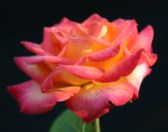
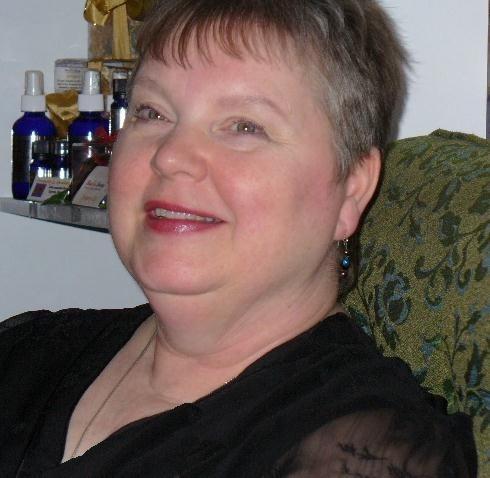
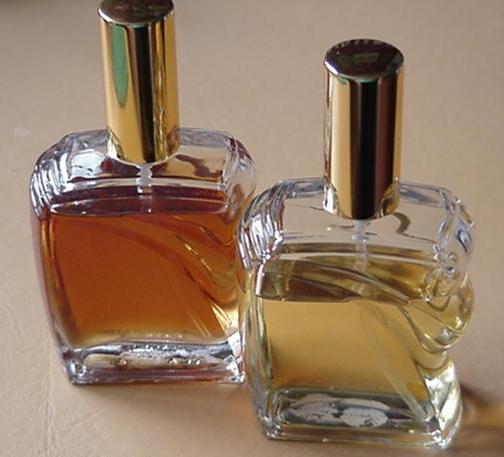
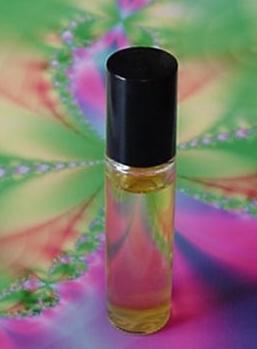
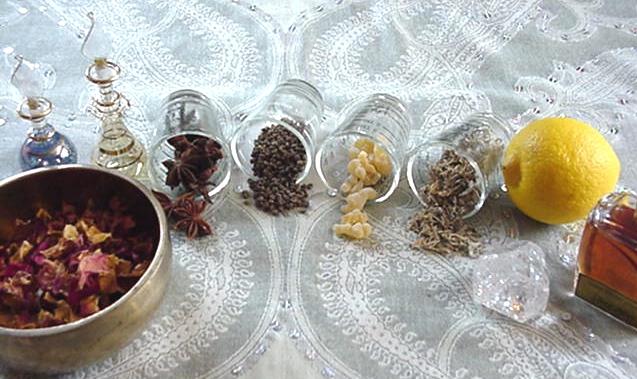
Sniffapalooza Magazine
Interview with Roxana Villa of
Roxana Illuminated Perfume™
Roxana, can you tell us briefly about yourself?
I am a storyteller and an artist whose palette consists of pencils, paints and essential oils. Whether I create an image or a perfume my intention is to bring greater awareness of our essential nature and the plant world.
Could you please tell us a bit about your background leading up to your career in perfumery?
I was born in Buenos Aires, Argentina and had a very eclectic upbringing traveling back and forth between the Americas.
In the eighties I graduated with a Bachelor of Fine Arts Degree from Otis/Parsons in Los Angeles. I moved to NYC and have for over twenty years been working as a professional freelance Illustrator for the publishing world. My paintings have been exhibited in Los Angeles, New York and Japan. Auspiciously one of my regular monthly contributions was for the fragrance column of Connoisseur Magazine. While pregnant with my daughter Eve I became very aware of how the outer environment affected my inner landscape. This idea of the connection between the inner and outer realms is one of the reoccurring themes in my drawings and paintings. At a Native American sweat lodge I was introduced to essential oils, which forged a new creative path for my artistic expression. Although I began in Aromatherapy, the use of essential oils for Perfume is where I find the greatest skill in working with these precious essences. Currently I live in an extremely creative household in the Santa Monica Mountains.
Can you tell us about Natural Perfumery?
The term Natural and Natural Perfumery varies from person to person and is dependent on their point of view. The word is like that big elephant where different people wearing blindfolds are all touching a different part of the animal.
I once spoke with a perfumer who, although she worked with synthetic aroma chemicals, defined herself as working with Naturals. I have also read labels that use words like "created with essential oils and natural fragrance oils", yet others include animal ingredients such as true Civet within what is called Natural Perfumery. So, you see, the words Natural Perfumery have the ability to incorporate quite a vast spectrum. I call myself a Botanical Perfume Artist.
What led you to perfumery, especially natural perfumery?
I've been challenged with chemical sensitivities and asthma. When I first inhaled the aroma of Juniper essential oil it was as if a veil between worlds had lifted and I was taken to a forest. For me the forest is a place of breathe, expansion and renewal. I became enchanted by aromatherapy for healing and studied the practice formally. Eventually I came to the realization that it was the art form of creating botanical perfume that aligned perfectly with my artistic expression. Essential oils are an extension of my artistic palette.
What differentiates your fragrance from other natural fragrance lines?
Botanical is the term that resonates with what I choose to create, both visually and aromatically. At times I include essences that come from the sea or apis realm, which technically are not botanical in nature, however my palette is comprised of ninety nine percent botanical ingredients. I choose to work with essences that are whole, organic and of vital origin whenever possible. The animal ingredients like civet, ambergris and castoreum, contained in many natural perfumes are not in the fragrances I formulate. The botanical perfumes I create are very concept driven and fabricated by my own hand. In keeping with the spirit of the exquisite handmade artifact, our quarter ounce perfume flacons arrive in a couture crocheted pouch. Each fragrance is illuminated with an image by award winning artist and concept designer Gregory Scott Spalenka. All these aspects create an intimate interaction with the beauty of nature. While studying in art school I took classes on bookmaking and letterpress printing. Later when I lived in New York I owned a Van der Cook flat bed Letterpress housed in a brownstone in Greenwich Village. The love of craft is embedded in my artistic psyche. As William Morris, I embrace the primacy of the handmade object and wish to bring that heritage and romance to my fragrance line.
Tell us about the fragrances you’ve created. With a deep respect and adoration for Nature and her spirits I mindfully formulate each perfume. The most popular fragrance in my current line has been created for the coastal live oak of California. At the moment I am calling this fragrance "Q" for Quercus, the botanical name for Oak, soon that name will be replaced along with a companion perfume. The melody for this formulation began with a strong intention set on the Celtic high holiday of Beltane to protect four large oaks. This fragrance set in motion a series of perfumes devoted to the aromatic landscape of California. I have become active in my community to protect our native oaks and bring consciousness to the value of our beautiful native plants.
The perfume Chaparral celebrates the sages and other native plants found here in the Santa Monica Mountains where my home is located. Vera, our ode to Lavender, came to fruition when Sandy Messori asked me to be the keynote speaker at the Ojai Lavender Festival. I choose to fashion a fragrance devoted to the Lavender farmers of Ojai and the aromatic plants emblematic to the region. My process in composing fragrance is very meticulous. Some of the perfumes contain multiple handcrafted accords and tinctures specific to the perfume. I create the fragrances as editions; each edition may vary depending upon what materials are available at the time. Botanical perfumes are like wine, dependent on the agricultural and climatic conditions of the moment. Raw materials shift and may not be available from one season to the next. The system of editions gives me flexibility within the dynamic world of nature and resonates with my background in the visual arts.
What is the oddest ingredient that you have used in perfumery? I tend to tincture (put into alcohol) quite a variety of materials. "Odd" is a relative term. When individuals have their palette done for a bespoke perfume, custom perfume portrait, they get to experience the scope of my aromatic collection. My clients are most intrigued by the distillation of earth after the first monsoon rains in India, sea shells, mushrooms and chocolate, and an attar my beloved refers to as the "horsy" one. Currently I am tincturing bee propolis, combs and caps for a signature perfume of our mascot, the Bee. I have found a really lovely, local gentleman who has a long family lineage of working with the land and the bees. He will be supplying me with the propolis, comb, caps, honey and beeswax needed for my perfumes.
It is a joy discovering local individuals to work with.
As a perfumer, where do you find your inspiration? Essential oils are congealed nature; it is the beauty of the materials that attracts me to work with them. In some ways I am like the bumblebee drone, endlessly seeking those potent scent molecules aloft in the air currents.
Where do you draw your inspiration? You are obviously an artist as well. I have a very deep well where I draw up inspiration. The primary source is the divine. Threads that lead to the center of my creative heart include nature, mythic stories, relics of the past and all that is rich in beauty. At other times I am intrigued by the mystery of it all.
There must have been a defining moment that led you to become a perfumer. How did that happen?
The nature divas sprinkled their fairy dust on me, grabbed my hands and took me to their circle to dance when I first inhaled Juniper essential oil. It was at the World of Aromatherapy Conference of 1996 that I met luminaries involved with essential oils deepened my love affair.
Were you inspired by any one perfumer? I am inspired by passion; David Crow and Jan Kusmirek are two individuals who are very passionate about aromatics. Although both these magnetic gentlemen have created perfumes they are not "technically" perfumers. Gail Adrian has had the deepest affect on my work. She taught me how to bring my essence as an artist and lover of mythic imagery into my perfumes.
What was your favorite fragrance growing up? The fragrances that have entwined
themselves into my psyche and continue to stir me the most are those of my birthplace,
Argentina, and the full sensorium of my grandparents' apartment in Buenos Aires.
There was an Argentine children's cologne that I loved called "Colonia de Bebe", it was
a typical cologne with an abundance of Neroli. I remember my grandmother and aunts
spritzing all the cousins with this as we went out to attend a family function. The
other fragrances I recall are L'Air du Temps and Anais Anais. My mother worked in
the fashion industry, creating knitwear for Ali McGraw, Charo and Lois Clarke (James
Garner's wife). She would return from her travels to Paris with perfume, maroon glaces
and brie. Anais-Anais by Cacharel and L'Air du Temps Perfume by Nina Ricci are
now linked in my mind with my mother and travels to Europe.
What is the most amazing fragrance you have ever smelled?
The aroma of fresh plumeria and pikake flowers in Hawaii!!! I am also quite fond
of the flowering bulb The Pink Lady.
What are your favorite smells? I adore the aroma of the plant kingdom: Fresh
tuberose flowers from McGrath Farms, Plumeria in Hawaii, The potted Jasmine
sambac next to my front door, the fragrance of the California chaparral in
the springtime, the fresh and ozonic quality of the air on at edge of the seashore
and the vegetative wood of the forest
Which fragrance do you wish you had created? Nature is where I chase
my muse, particularly the hypnotic florals. I would have liked to be the
authoress of all the divinely scented flowers.
What power do perfumes have over people, do you think, if any?
Fragrance and perfumes have the power to shift our consciousness, take us
on journeys to forgotten places; a lovers embrace and adventures not yet imagined.
How do you tie in your artwork with your fragrances? The connecting threads
are most apparent in my love of nature, heightened consciousness. and mythic
story. In both artistic expressions I am a storyteller, weaving tales through imagery
intended to awaken us to the presence of the soul. We've chosen to use Gregory
Scott Spalenka's artwork with the perfumes because they are so evocative of these realms.
Some of the images have been created specifically for our fragrances.
Chaparral
Enchantment
sample packet
Greg has contributed visual development work for films such as The Golden Compass and The Voyage of the Dawn Treader. His rich imagery is integral to the full sensorial experience of Nature that Roxana Illuminated Perfume brings forward. I feel honored to have the opportunity to incorporate his illuminations with the perfumes. It is a perfect synergy.
I have to tell you, I am also totally smitten with Mandy Aftel and her fragrances. She is a goddess. (so are you) Has she influenced you in anyway? Thank you for attributing the word Goddess to me! I was referred to Mandy Aftel in the year 2001 by our mutual and dear friend Christopher McMahon, just after the second World of Aromatherapy Conference held in Seattle. In the late nineties Jan Kusmerik brought the consciousnesses of the link between aromatics and alchemy into my mind. A couple years later I picked up the book Essence and Alchemy due to the title and imagery on the book cover. At the time I was teaching aromatherapy and had many students yearning to deepen their knowledge of blending. I asked Mandy if she was interested in sharing her knowledge in the Los Angeles area with my students and me. The first class took place here at my home in the Santa Monica Mountains. This was my introduction to the concept of perfumes as constructed artwork. Mandy and I shared much of our knowledge with each other. In 2002 and 2003 we continued organizing classes together at bigger venues like the Bodhi Tree. I am grateful for the path she has forged and the most extraordinary friends I have made because of her. She certainly is the Diva of the Natural Perfume Panorama.
Why do you think so many women and men are part of this fragrance explosion, especially the niche and natural trend? Olfaction is part of the rich multi media world that artists now turn to as we take the quantum leap into unexplored areas of the brain. Artists, as the antennas of our culture, sense this new terrain and the possibilities of incorporating all the senses as part of an art experience. Healers are utilizing the total sensory experience in their wholistic practice and there is also a deepened trend for items created by hand. Most obvious is the impact of the Green Movement with its awareness on items from the botanical world.
When I think of you, I believe that you have chosen a metaphysical path in perfumery as well as your everyday life. Is this true? I seek and appreciate heightened consciousness. I also enjoy discovering that which is hidden from our everyday perception. This is one of the two reasons I have chosen to include the word Illuminated in the company name. My intention is to illuminate the beauty and value of nature.
Is there anything else you would like our readers to know about you or your perfumes that we have not discussed?
I will share a secret here with Sniffapalooza Magazine readers. I have been working with internationally acclaimed faerie artists Brian and Wendy Froud (Faeries, Dark Crystal & labyrinth) to bring a touch of Elf land to the World of Fragrance. Do you believe in Faeries?
Where are your fragrances available? Currently they are available at www.illuminatedperfume.comSign up for our newsletter to keep up to date with the latest breaking news from the Illuminated Studio.
Thank You Raphaella for your beauty and birthing this magazine that celebrates Perfume in all her varied manifestations.
Roxana Villa will be attending the Sniffapalooza Fall Ball in October.
Gregory Spalenka and Roxana Villa
Lyra by Greg Spalenka
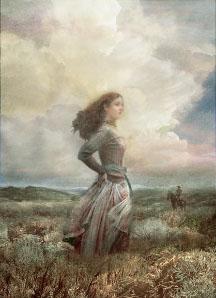
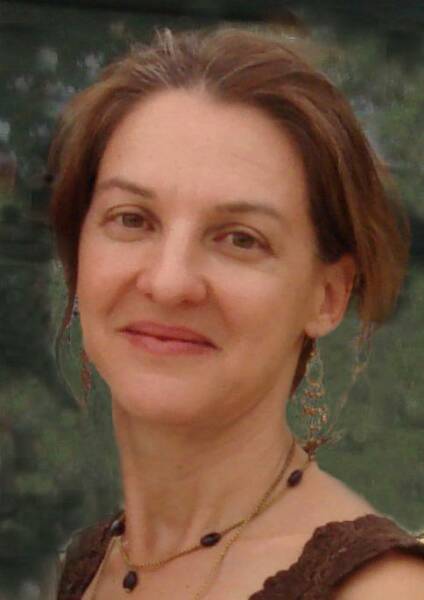
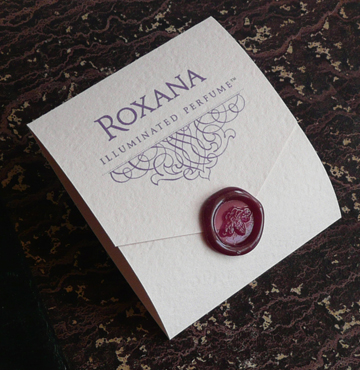
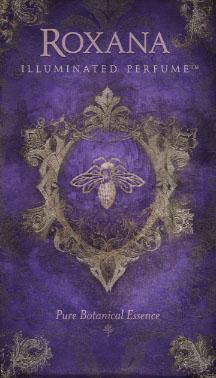
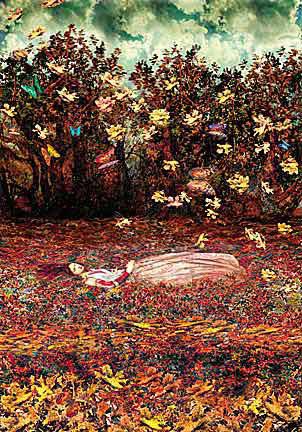
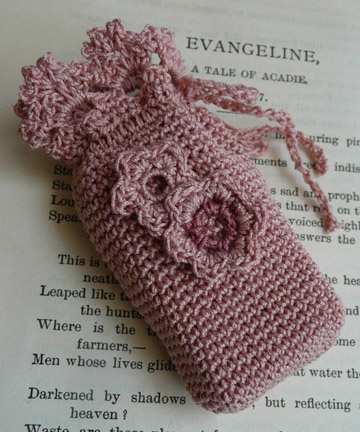
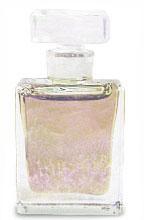
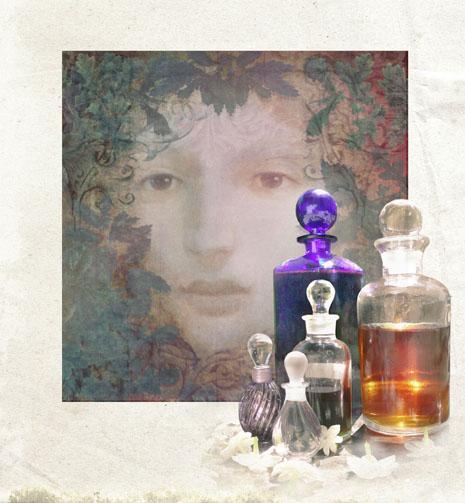
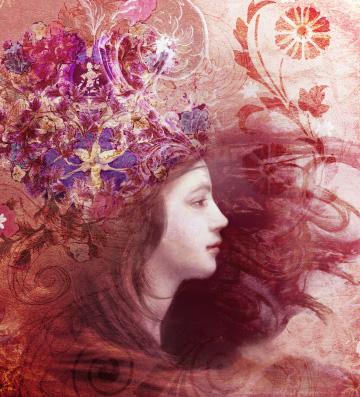
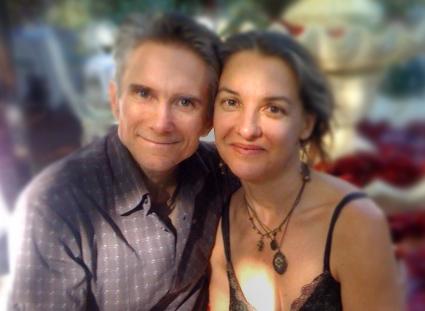
The Naturals...Interview with Alexandra Balahoutis
STRANGE INVISIBLE PERFUMES
by Raphaella
I have to tell you, your web site for Strange Invisible Perfumes is absolutely gorgeous; I have also heard that your fragrances reflect the spirit of your web site, do you agree?
I think that it captures the mystery and richness of our fragrances. There are a few of our perfumes, however, that I think have lighter, friendlier dispositions. The website embraces the dark side of Strange Invisible Perfumes.
Can you tell us about yourself, you are the perfumer and owner of Strange Invisible Perfumes as well as owner the storefront in Venice California? My vision continues to evolve. I am the perfumer and I formulate other products as well. I have my hand in every element with the exception of shipping and receiving. I am very engaged in the storytelling aspect of what we do. I also really love marketing fragrances with sincerity and inspiration. I have an excellent team of people that exemplify integrity and dedication. We are pretty intense as a team. We are not “ballpark” people. A thing is right or it is wrong. An ingredient is pure or it is questionable. A scent is either irresistible or forgettable and irrelevant. I want to make people feel things they wouldn’t have had they not worn a Strange Invisible perfume that day.
There must have been a defining moment that led you to become a perfumer. How did that happen?
It was like wild fire. I had to know. I couldn’t sleep until I knew how to make what I wanted to make. Unborn compositions were tormenting me. It sounds dramatic but it’s true! I realized early on that I had a vision and a point of view with fragrance. It was the first time I knew beyond any doubt that I could absolutely do something from start to finish. I saw myself easily translating art into a business without compromise, and that is a damned hard formula to exact.
Can you tell us what Natural Perfumery means to you? It means authenticity, purity, and the intelligence, sexuality, and mystery of plants. Perfume is about essence. An essence comes from a source and that source defines that essence. Synthetic essences may smell nice to some but they are not essences at all. They are powered by nothing other than a process of mimicry. Think of the essence of a person. Now imagine the essence of a mannequin. I also think that botanical perfumery poses a higher level of challenge, yet provides superior notes and nuances. This is an exciting combination for a perfumer. Call me a hippie if you like, but I want a rose to be a rose.
Tell us about some of your favorite fragrances you’ve created. Magazine Street and Prima Ballerina are my favorites from my line-up. There are others in my private collection that I won’t mention. I will say that I love blue lotus, Himalayan cedar, and vetiver more than life.
As a perfumer, where do you find your inspiration? People, places, beauty, and odd emotions impossible to explain.
What was your favorite fragrance growing up? My mother’s Violetta and Elisabethan Rose by Penhaligon’s were my favorites. They reminded me of her and she is the greatest.
What is the most amazing smell you have ever experienced? My boyfriend’s kiss, my father’s house in the tropics, and the tormenting, aromatic beauties of Fez in Morocco, were almost too much for my poor nose and heart to take.
Why do you think so many women and men are part of this fragrance explosion, especially the niche and natural trend? Fragrance used to be about essence and stories. In the twentieth century, it became about identity. To sell perfume in today’s fragrance market is to traffic in identity. People want to be someone better and more interesting I think. They want to find their own essence in true essences and the aromatic stories of smaller, artisan fragrance houses. People would rather not be branded on the visceral level of scent and emotion. Who wants to be in bed with someone and, while kissing, see flashes of an ad on a bus? It’s a little dull.
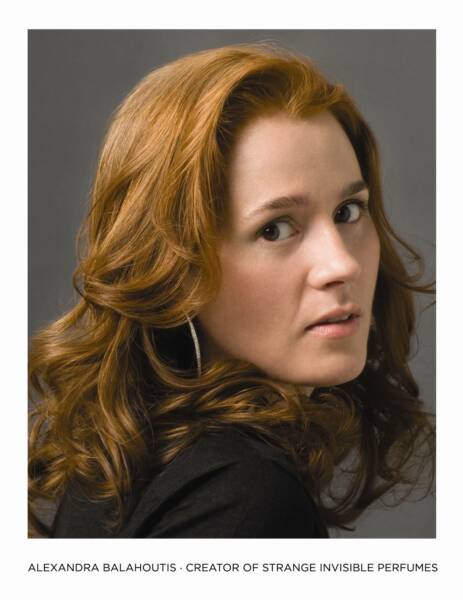
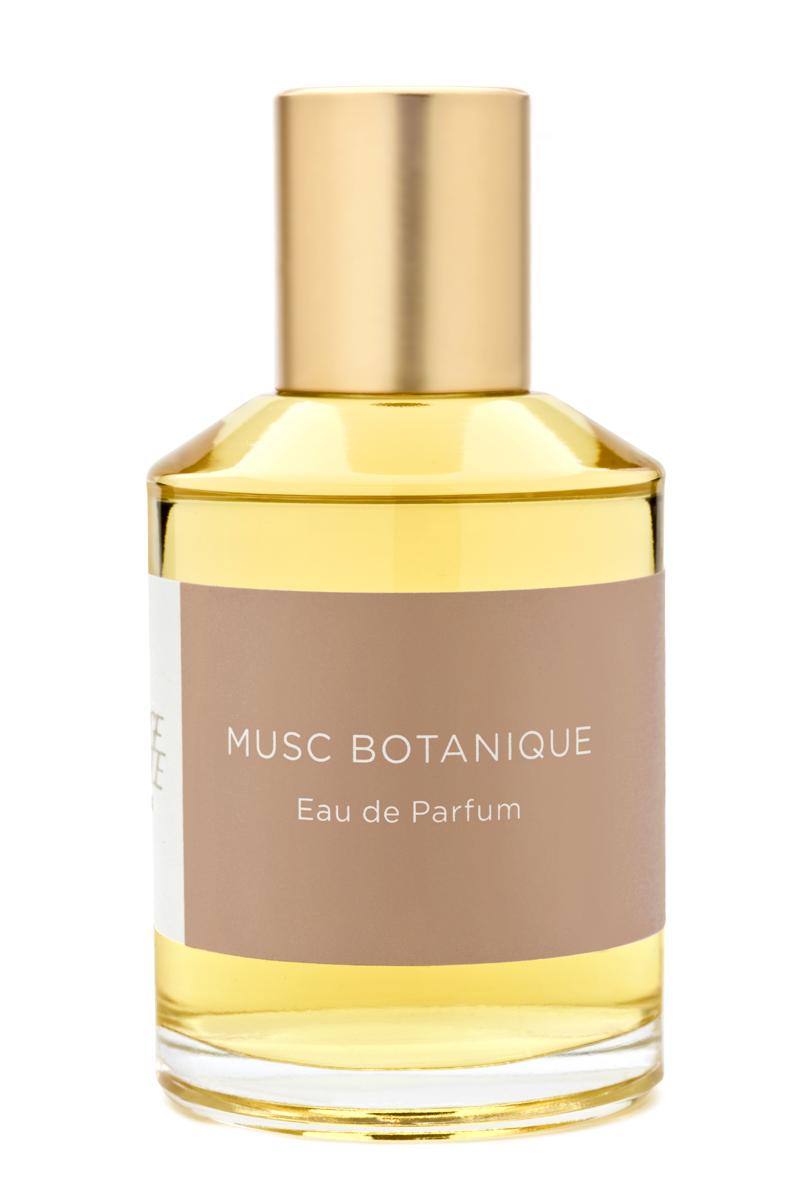
Is there anything else you would like our readers to know about you or your perfumes that we have not discussed?
I just hope that people know how precious and personal essence and fragrance are to me. I am so enchanted by people, even strangers, and this is doubly so when I see them enjoy coffee or smell roses. You can learn so much about people by observing them indulge their senses here and there. I truly want people to be happy with my perfumes and products. I want to give them the very best thing that I can make. I’m never quite ready to close the book on precisely what that thing is.
Where are your fragrances available for sale at? I have seen your fragrances at Barney’s NY. Anywhere else?
Beautyhabit.com, Turpan (Brentwood & East Hampton), Roseark, and other specialty apothecaries and boutiques around the U.S., including our first entrance into Dallas, at Spa Habitat, which I’m very excited about. Internationally, we are available in Berlin, the Ukraine and Qatar, and are in talks with very interested accounts to expand our reach further.
Fragrance Review
Cat’s Meow
By Tonie Silver, Le Parfumeur Rebelle
I could dedicate an entire review to Perfumer Laurie Stern’s aesthetic for her luverly company Velvet & Sweet Pea’s Purrfumery~ it’s that sweet and special. To my mind, only one other company has ever impressed me this much with the care and attention paid to the beauty of presentation~ it’s that impressive. From the lush purple box the products arrived in, to the shredded paper packing, to the silver wrapping paper, to the little velvet pouch with a rhinestone buckle, to the sweet little info cards, to the silver box with the faux gem on top~ I was blown away. Laurie was a wedding florist in a previous incarnation~ lucky us that she does perfume now!
The scents themselves are nearly impossible to describe, they’re so complex and delicate~ they’re like a fine lace or filigree. They are a testament to Laurie’s love affair with flowers. It’s trippy, but instead of being heavy and overbearing, these fragrances invite you to come closer to inhale their lovliness, like a flower inviting a bee.
The Terrain is probably my favorite; it smells incredible with mitti attar. Laurie employs the most delicate hand, but it’s still strong enough for me. This is what I want to smell constantly and forever. Indescribably beautiful. When I look on Velvet & Sweet Pea’s site, I was shocked to discover that this was an eau de cologne, not a perfume. I am always drawn to scent in its strongest concentration, and yet I am completely smitten with this. Laurie outdoes herself with this blend.
Narcissus Poeticus is kind of low and warm and deep. Kind of gummy and resiny, polar opposite of the high, white, clean smell I expected.
Velvet & Sweet Pea’s Gardenia is not your granny’s drugstore jungle gardenia. Laurie’s version of this hypnotic flower is not at all the funereal, cloying choker that most of us grew up with. This interpretation is all softness with notes of candy and powder~ and I mean powder in the best sense of the word. Dry down brings out an ambery spice anchor. I detect some juicy citrus notes as well. Another one I cannot stop sniffing.
Jasmine Dawn & Dusk was another surprise~ citrusy sweet. I wanna say bubble gummy, but in the best possible way. Three different jasmines meld warmly with citrus oils to give an edible quality to this potion.
Songbird~ clear light orange blossom champagne with a tiny little anchor of a sparrow’s foot of sandal or mitti holding it from completely ascending.
Jewelry Of Heaven is complex; starts with a winey note, drying down to kind of a sweet, clear orange candy with a powdery top, then settles into a sandaly, mitti-ish heart. Veddy veddy nice indeed.
Sniffapalooza Magazine Interview
with Perfumer Laurie Stern
Velvet and Sweet Pea’s Purrfumery
By Raphaella Brescia Barkley
Review follows interview
Cat’s Meow
By Tonie Silver, Le Parfumeur Rebelle
Laurie, Thank you for joining us.
Can you tell us briefly about yourself and your perfumery?
My vision for my perfumes is to capture the romance of the “golden era” of perfume through romantic scents and gorgeous packaging, and then to blend all this with a modern sensitivity
to organics, health, and ethics.
At the heart of each Velvet and Sweet Pea perfume is always the profound sense of awe and wonder that I hold for the natural world. I craft my perfumes first with glorious scent in mind, but
I’m also constantly incorporating myriad other facets, from the aromatherapeutic and healing properties of plants to their historic significance to the way in which a particular harvest has been gathered and grown.
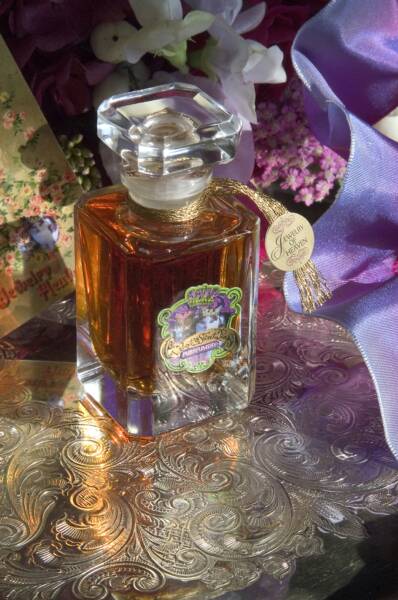
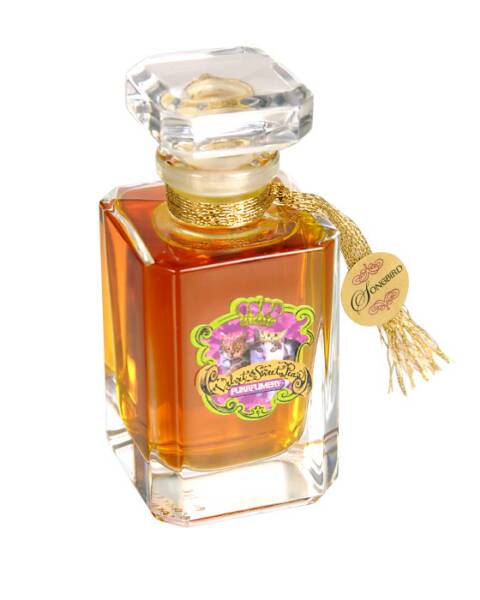

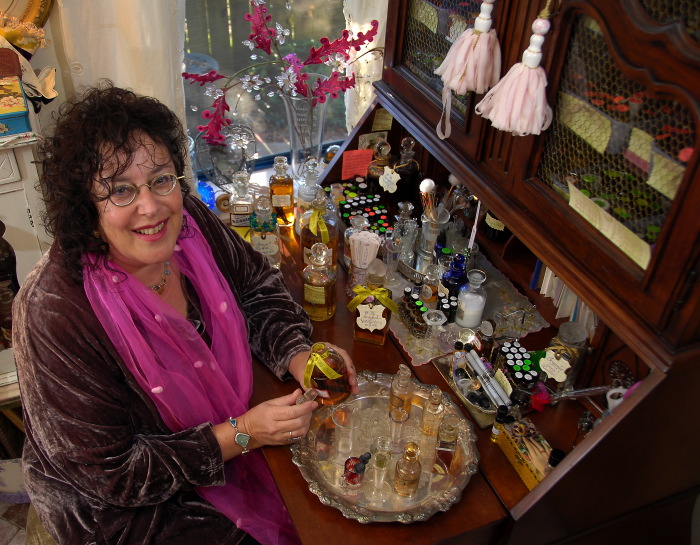
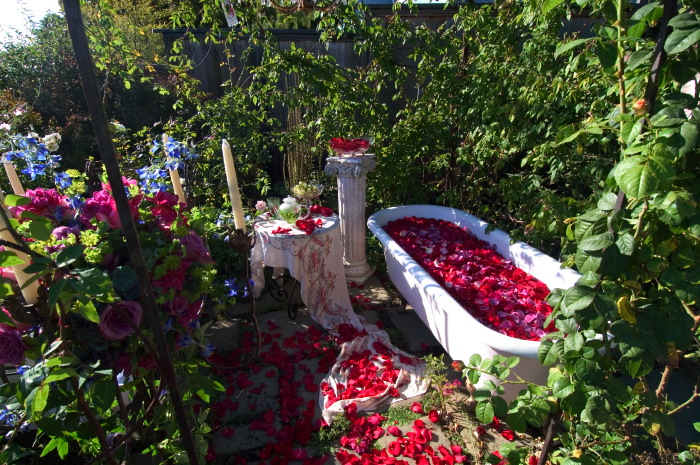
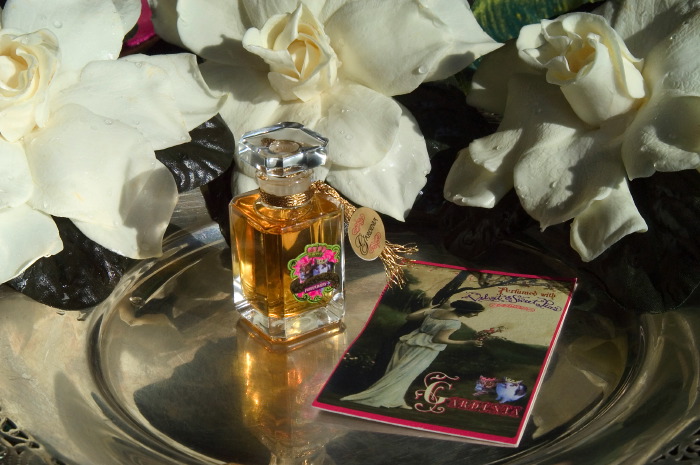
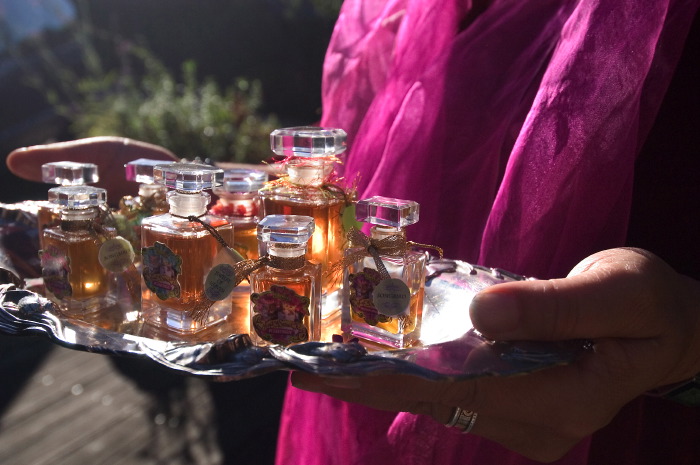
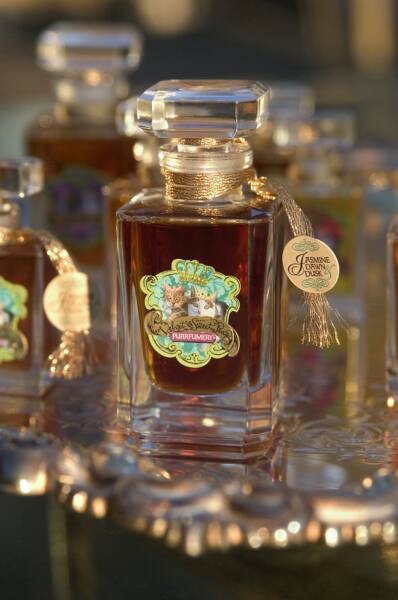
More recently I had the opportunity to visit the Capitoline museum in Rome for their exhibit on a 4,000 year-old perfume factory dedicated to Aphrodite, the goddess of love, uncovered on a dig on the island of Cyprus. I loved seeing the delicate blown glass vials, handmade earthenware pots, tiny amphorae
and iridescent alabaster vessels that held the ancients’ essentials oils. The perfumes originally
produced there have been recreated, containing essences of coriander, bergamot, pine, bay laurel,
bitter almond, rosemary, lavender, myrtle, parsley, and bee propolis. I felt deeply moved to witness these beautiful, functional artifacts and experience the resulting fragrances, redolent of rich Mediterranean flora and herbs. Today, these essences still transform our bodies and souls, and I feel so fortunate to be continuing and honoring this ancient art.
And lastly, of course, my cats inspire me! Cats live in the moment, making the most of opportunities to relax and take care of themselves, and luxuriate in only the best of everything. This is why I’ve named Velvet
and Sweet Pea’s Purrfumery in their honor – may we all learn so well how to stretch out in the garden and just enjoy the flowers and the bees and the sunshine!
What was your favorite fragrance growing up?
I grew up a block from the beach, on the east coast, so of course it’s the ocean. I love the perfume of clams, ocean, storms coming, seagulls and seaweed! When I was younger I loved wearing Body Time Lily of the Valley, Joy & Diorissimo. In high school I was given a bottle of Joy from a friend’s mother. I adored the rich rose jasmine smell. In my twenties I wore a lot of obscure Italian and French perfumes I would find in the south of France when I traveled there to buy antique laces.
What is the most amazing fragrance you have ever smelled?
When Gary and I were a young hippies traveling the country in our van, we ended up in the orange groves of Valencia, California, hoping to buy oranges for a backpacking trip. From the farm stand the narcotic smell of the orange flowers called to us and the owner gave us permission to wander into the grove. We disappeared into those neroli flowers for a couple of hours and were totally intoxicated by them! I still need to make that perfume some day. That is my favorite scent memory!
One of the fun things I do now is something called the Perfumery Adventure, which is an experiential adventure in which people have the chance to smell rare scents from all over the world and hear stories about the history and origins of unique materials. I love offering people the chance to smell things they would never have the chance to smell otherwise, to access for themselves the kind of excitement and intoxication I’ve found on my own scented journeys.
What power do fragrances have power over people, do you think, if any?
On my website, in the “frequently asked questions” section, I answer the question, “So here’s what I really want to know - will perfume really make me a sex god or goddess like they say in all the ads?” What I say there is that I believe there’s no “secret pheromone” to make people instantly fall in love with you.
But I do believe very truly in the power of perfumes as enhancements to feeling sensual. Natural perfumes, in particular, made from pure and complete plant essences, affect deeply the oldest, most primitive part of our brains. Many of the materials I use have documented effects of relaxation, calming, and mood-enhancement. And who is more irresistible than someone who feels beautiful, delicious-smelling, peaceful, and relaxed? What I believe, and what I’ve seen in my own life and in the lives of my customers, is that the rituals of moisturizing, bathing, and perfuming, combined with the truly remarkable therapeutic effects of natural essential oils, act as the most delightfully effective aphrodisiac I know.
Why do you think so many women and men are part of this fragrance explosion, especially the niche and natural trend?
I think it’s wonderful how much conversation and creation there is around perfume right now. The public is gaining a renewed understanding of perfume as an art form. I think natural perfumes are seeing a rise in popularity because so many of us are fragrance-sensitive or allergic to synthetics, or simply enjoy the subtlety of natural perfumes. There are also wonderful resources available on the web for amateur and professional perfumers like the Botanical Perfumery Yahoo group and the Parfumeur Rebelle website.
Perfume also calls on a connection to the ancient world, and to our primal brains. We are so used to rushing around in our modern world, thinking and planning, and our sense of smell is very present, very immediate. Scent makes us relax and get grounded in our experience. It can be a beautiful break reminding us to slow down and smell the roses!
You’ve just bathed in a pool of clear, crisp mountain spring water. You roll down a hillside, still naked, through a riot of wildflowers.
As you crush the blooms, they release their fragrance~ a rainbow of sunny smiles, lifting up to Heaven. You run exhilarated, through the fresh spring breeze, petals clinging to your still damp body. Oh no wait~ you’ve just used Velvet & Sweet Pea’s Calliope Bath & Body Oil.
Laurie also does Solid Perfumes in a base of organic jojoba and beeswax. These are packaged in the dearest little silver poison boxes with a big faux gem on top. I tried the Honey~ tuberose predominates with a citrus top note. This is bee juice, man, for sure. Sweet, gooey, and tasty. Lovely. Victorian.
Velvet Sweet Pea’s Bath Salts are just grand. Highly scented and packaged dearly, they come in Kashmir Lavender, which is a must have. Really clear and sweet.
Passionflower is a surprise, with spearmint, ylang, blood orange, and lime. I am not a fan of mint, but it works wonderfully in this blend. Monkey Cat smells like essential oil of monkey and cat. Kidding~ I’m kidding. Named for one of Laurie’s kitties in residence, try this one yourself and see.
Terrain is lovely, with frankincense, geranium, and lime. Different than the perfume version , methinks.
Laurie also stocks some splendid organic hydrosols: Bulgarian Rose, Orange Blossom, Rose Geranium, and Lavender. Staples. I’ve tried others, and I’m very impressed with the strength and quality of these. So much so that I ordered more of the orange blossom and the rose.Laurie also offers Perfumery Adventures~ check her site for details. Um~ she has a claw footed tub in her back yard~ enough said!☺
Any of Laurie’s products would make the dearest, most impressive gift.
Expect big things for Laurie Stern and Velvet and Sweet Pea’s~ just look at her last name~ she’s a star!
www.purrfumery.com (510)528-8040
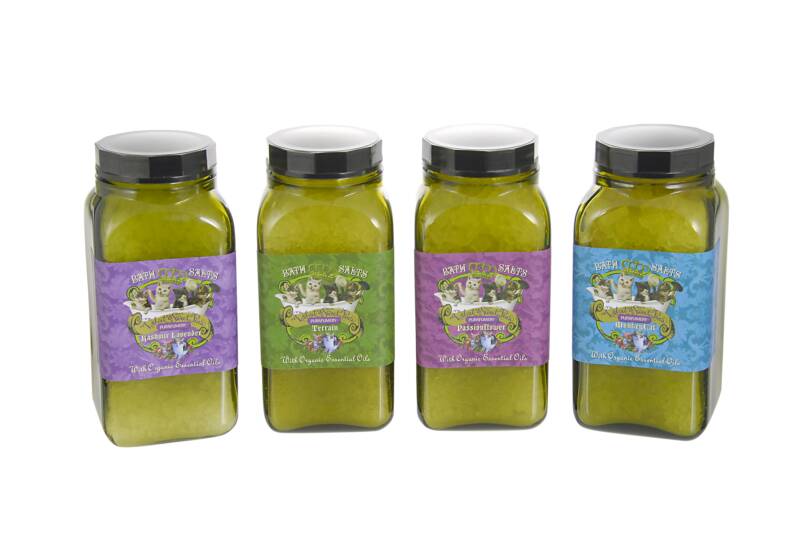
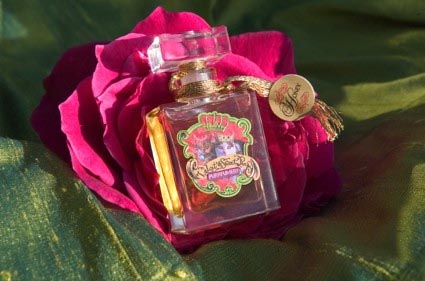
Honey Perfume
Sniffapalooza Magazine Interview
with Ayala Sender
Artisanal Natural Perfumer from Ayala Moriel Parfums
by Raphaella Brescia Barkley
Ayala, everyone I talk with tells me that you have just some of the most beautiful natural perfumes on the market and that you are well known for making beautiful all-natural perfumes as well as your contribution to the art of perfumery - it sounds as if you have worked very hard to accomplish this -so I would like to start off by saying congratulations.
Thank you! I’m very happy that perfumistas are enjoying my perfumes. Allow me to use this opportunity to thank all of my customers for loving and enjoying my perfumes, supporting my little perfumery and spreading the word about what I do. It really wouldn’t be possible for me to continue making perfumes without you. And thank you, Raphaella, for putting me in the spotlight here on Sniffapalooza Magazine.
Your mission is to bring us joy through the sense of smell – with beautiful, inspiring, sensual and evocative all-natural fragrances, please tell us about that and why it is important to you-
Perfumes and olfactory experiences bring me joy. Creating perfumes brings me joy. And even more so – sharing my passion and knowing that what I do brings beauty and joy to other people’s lives. It’s as simple as that.
I am fascinated by your collection of fragrances titled “Language of Flowers, the Soliflore Collection”, because I love flowers and true floral fragrances, please tell us about those.
Flowers always fascinated me. As a little girl, I would admire and study their structure,shapes, colors and patterns. I always felt that they had their own language. In a sense, the soliflore collection is the grown-up incarnation of this flower obsession; only this time, the emphasis is on the olfactory language rather than the visual. Each soliflore is a micro-cosmos with its own mood, texture, rhythm and memories.
I also understand that you use the highest quality of natural essences that you can find to make beautiful perfumes…
It is still a mystery why certain note combinations smell a certain way, or why perfumes by different perfumers carry their makers’ unique “fingerprint”. But one thing we know for sure: if you take care of each and every part of the process - paying attention to every detail will in return give us a high quality perfume. Every aspect of the process – from growing and picking the plants, distilling, blending, maturing and bottling has an impact on what you are experiencing in the finished product. While I have very little impact on how the plants are grown or distilled, I have the power to make the choice of where I invest my money. I choose to use the best quality that I can find and in that way I am investing in the future of quality raw materials. It is my belief that in those seemingly small everyday decisions lays the key to making the world a better place: my customers are happy and continue to support what would otherwise be dying arts – aromatic agriculture, distillation and of course - artisan natural perfumery.
You also have perfumed tea with some of the fragrances! Tell us about that.
These teas were made in joint collaboration with Inner Alchemy Tea Co. – a Vancouver-based tea company owned by Dawna Ehman. Each tea is inspired by a perfume in my line (and carries the same name) and in a sense is a “translation into tea” of that particular perfume. Dawna is an exceptional lady with integrity and passion that shows in everything that she does. Working with her has been both an incredible learning experience and a real treat. And I am very happy with the fruits of this collaboration – 4 amazing perfumed teas (3 of which are made of 100% certified organic teas and herbs).
The term “perfumed tea” requires clarification. Contrary to one’s intuitive interpretation to the term, it is not as literal as it may sound. These highly fragrant and flavourful teas are neither spritzed nor dabbed with perfume; the process in which they acquire their exquisite perfume is pure and unprocessed.
In tea culture, the term “Perfumed Tea” refers to tea that received its unique fragrance and taste from authentic aromatic plant matter. As opposed to “aromatized tea” which is flavoured with a combination of artificial and natural flavourings. In Ayala Moriel’s Perfumed Tea Series, the tea leaves are perfumed by the addition of dried aromatic and flavourful botanicals. For example, our newest tea, Roses et Chocolat, is perfumed with rose petals and cacao nibs; the rooibos in the Immortelle l’Amour tea is perfumed with sliced vanilla bean (they even leave vanilla specs at the bottom of the cup!); the yerbamate and green tea in Gaucho are perfumed with lemongrass, damiana and clover blossom; and the Japanese Sencha green tea in Tirzah is perfumed with a floral bouquet of linden blossoms, hops blossoms and osmanthus flowers.
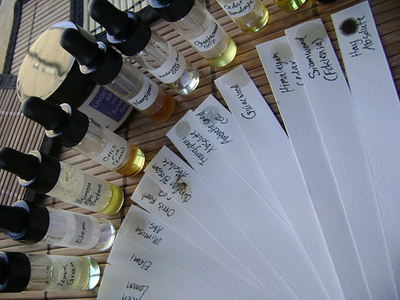
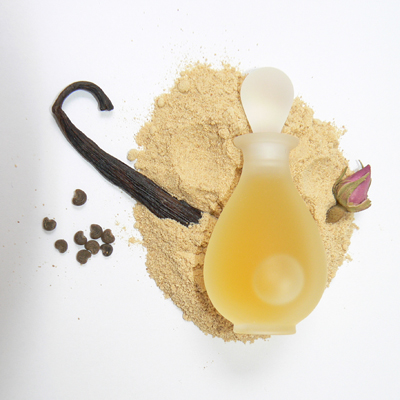
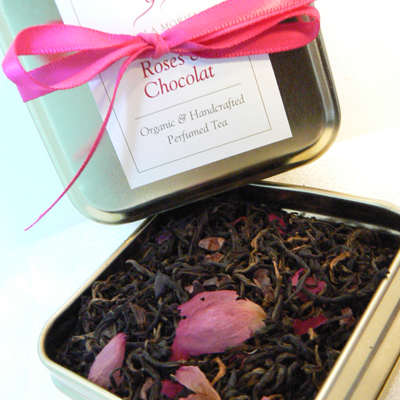
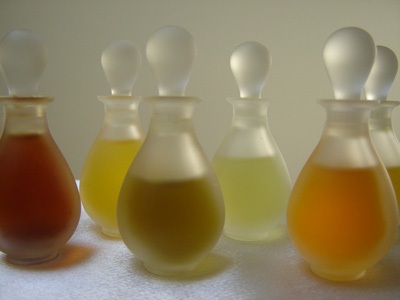
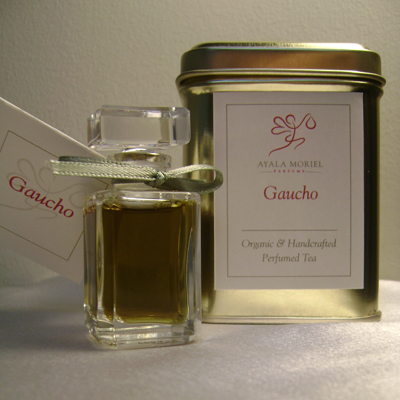
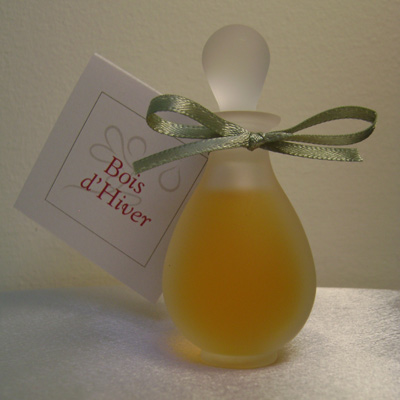
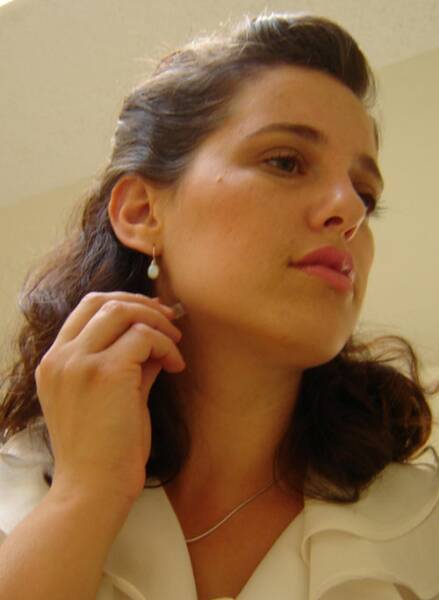

Your course in Natural Perfumery sounds amazing, has that been successful? It looks very through and I wished I lived closer to you as I would sign up immediately but you do also offer a Correspondence Natural Perfumery Course, correct?
The Foundation of Natural Perfumery Course is a two-year program with an apprenticeship option to follow the completion of the course. We have now started the second term of the course, so everything is still very new. There are new students signing up every term, but I try to keep the group small, so I never take more than 10 students at a time in total for all levels (correspondence students included). The course is accompanied by comprehensive book, hands-on exercises and theoretical assignments. The assignments are spaced over each term to encourage a healthy studying pace. Although you will most benefit attending at least one or two sessions a year, the course is designed as a correspondence course as well, laid in a format very similar to that of Open Learning universities: there are monthly tutoring sessions over the phone, and assignment are handed in on a regular basis for feedback via mail and email. It is a very personalized program, so each student gets one-on-one time and their unique issues and questions addressed to help them achieve their professional goals in the field Natural Perfumery.
Your web site offers all sorts of ways to purchase fragrance, there are different types of sample packages available as well as perfumed pendants, poison rings, roll ons, travel size perfumes, gift sets, bottles, Crème Parfum Silver Pendant and parfume Parfum Extrait, how on earth do you keep up with it?
Just one bottle at a time… Really. Perfume is an art that requires patience, precision and perseverance. For me to sustain and nourish what I believe in, I must not sacrifice quality for the sake of profitability or mass quantities. The key for me is in dedication and organization, and also keeping a balance in my life as a whole. Thankfully, my business is growing organically, so I never bite more than I can chew; and I gradually learn as I go how to run the business more smoothly as it grows.
Logistically speaking, I always make sure I have a sufficient supply of my top-selling perfumes, and at least few bottles of each of the other fragrances in stock; while the pendants and poison rings are only filled on-demand. All the perfumes and solid perfumes are hand-made and hand-packaged by myself. The scented candles and perfumed teas I leave to my experts to make (Inner Alchemy Tea Co. makes the teas and Gabriel’s Aunt makes my candles), and this way I can be sure the quality is highly maintained and at the same time I’m also supporting two amazing businesswomen!
Is there anything else you would like our readers to know about you or your fragrances that we have not discussed?
Yes, I would like to mention two things: my new candle collection and the Holiday Soiree on December 21st. Other than that, I invite you all to visit SmellyBlog for educational articles about raw materials and the art of perfumery, as well as updates on everything that is new at Ayala Moriel.
A little more about my new candles:
ArbitRary soy wax scented candle was launched in the summer and was so successful, I am launching three new scented candles are added to the collection this Fall: Bois d’Hiver, White Potion, and the third candle Roses et Chocolat launched in the New Year.
Bois d’Hiver (with Fir & Orange Blossom) is an unusual interpretation of a holiday candle. While it has some of the classic winter holiday elements – spices, coniferous and incense notes – it is everything but cliché. Lighting it is an unusual experience, combining the peacefulness of a walk in the woods in the winter, and the meditative serenity of an incense-laden church.
White Potion (with Tuberose floral wax, Tonka bean & Coconut) is a truly luxurious white floral candle, with the emphasis of tuberose with some accents of jasmine and ylang ylang.
The candles are hand-blended and hand-poured exclusively for Ayala Moriel by Nikki Sherritt of Gabriel’s Aunt http://www.gabrielsaunt.com/ in Seattle.
Lastly, I would like to invite you to my Holiday Soiree on December 21st (6-11pm) at Ayala Moriel Studio in Vancouver. This is the first night of Hanukkah, so of course we’ll light the menorah, and some scented candles too! In addition to the beautiful perfumed teas and flower-scented chocolate truffles – the culinary highlight of the event will be Sahleb – the pudding beverage that inspired my new perfume, imported straight from Jerusalem!
Can you tell us what Natural Perfumery means to you?
By definition, using materials that are as close to the source as possible and no synthesized molecules for creating perfumes. For example: vanilla absolute is a highly concentrated fragrance of vanilla beans and is natural; however, the scent of vanillin, that was synthesized from either petroleum or wood source (via guiacol or lignin waste, a bi-product of the paper industry) has very little resemblance to it’s source. Working with naturals means being closer to nature and working with raw materials that are more genuine and less refined or processed. Some of them are literally raw (i.e.: balsams). To me personally – natural perfumery is an art, a profession, a branch of modern perfumery and a continuation of an ancient art form. This is my preferred medium to create and express my ideas and emotions. I think everyone has a story to tell, but we use different languages to tell that story. Natural perfumery is my language of choice.
What are the most popular fragrances out of your line?
Espionage, Tamya and Ayalitta, in this order at the moment; Tamya often jumps to the top.
Were you ever inspired by any one perfumer?
I find Edmond Roudniska’s innovativeness and Jacques Guerlain’s poetic approach to perfumery most inspiring. If they were alive now I will do anything to have them as my teachers. Thankfully, their perfumes are still alive and I spent years (and will spend many more) studying them. I also admire Ernest Daltroff and Ernest Beaux, but I don’t think they’ve influenced my work as much.
What was your favorite fragrance growing up?
I grew up mostly surrounded by the scents of nature – wild hyssop, sage and labdanum growing on the mountains, herding goats, fresh lemon verbena, spearmint and lemongrass from the garden and everything that nature had to offer in the Western Galilee. My parents were hippies and my mom has anosmia, so even deodorants were foreigners in the house until me and my brothers decided to bring them in (they were regarded unnecessary and unhealthy by our parents but we would sneak them into the house when they didn’t notice).
The perfumes I was exposed to were the ones my grandmother wore, most significantly her life-long signature Vol de Nuit (when this was nowhere to be found she switched to Shalimar for a few years until Guerlain smartened up and offered it again in a wider distribution – at least in the eau de toilette) and AnaisAnais. The first perfume I enjoyed wearing was an AnaisAnais solid perfume knock-off that my grandmother brought from Greece. It smelled nothing like the original, and I loved it much better. I still have the little porcelain vase it came in, with little seahorses and mythical creatures hand painted on it. But the most influential perfume on me was Abishag, a long discontinued perfume that was exclusive to the Israeli Museum in Jerusalem. It was the first perfume I bought for myself, at the ripe age of 17. I lived off miniatures, saving up for the big ancient Roman-glass bottle they had, but by the time that happened it disappeared. Abishag was a resinous cross between chypre and oriental, with top notes that were sharp and almost revolting (they smelled like a certain species of little black beetles, kind of apple-like and quite overwhelming)– the most similar thing to it are the top notes of Private Collection. The base was very rich with labdanum and just magical. The closest thing to it is perhaps a combination of Tabu and Villoresi’s Incensi, layered with Private Collection on the top. I never managed to find out who the perfumer was or any other information about it.
What is the most amazing fragrance you have ever smelled?
Earth after the first rain, carob blossoms, beach lilies against the salty scent of the Mediterranean sea in late summer, fresh guava that was just
picked from the tree, fresh lemon verbena leaves, and orange groves in full bloom.
Which famous fragrance do you wish you had created?
Dioirissimo, Le Parfum de Therese, Vol de Nuit and Mitsouko.
Why do you think so many women and men are part of this fragrance explosion, especially the niche and natural trend?
In a world were everything is mass produced in mind-boggling quantities, high-quality perfumes provide a way to tune into one’s emotions and find
self-identity and a sense of connectedness and well-being; of being connected to our internal world and feelings by concentrating on something that
is distinctively different from everyday life. When it comes to natural perfumery – the perfumes also connect us to plants and nature. Natural perfumery is a very accessible way to benefit from the beauty and healing powers of plants.

RB: Dominique, I must tell you, you have a fascinating web site and blog. You have articles on all sorts of fascinating subjects as well as carry many products-I love your web site. Tell us about what you have created.
“Create” is a big word for a small creature. I have created nothing. The smelling plant itself does not create her perfume but she composes it by transforming molecules and by binding already existing atoms that she finds in the air and in the earth, using the energy of the sun.
A natural perfumer is like a deejay assembling together melodies that are the songs of praise that nature sings to its creator. You could also compare the natural perfumer to a writer who narrates novels or writes epics and poesies with the language of smells: Every smell in the nature has a meaning and this meaning speaks to our heart. Never to a writer was it asked what was the last novel or poem he created, but only what he wrote.
We only speak of the latest work of a painter or of a musician. It is not clear to me what has made the people accept the view that Laudaniel creates perfumes while Beethoven composes symphonies and Dostoyevsky writes books.
RB: Please talk to us about your work in olfactory research.
My field of research is olfactory psychology and then obviously its applications into the real world, which are olfactory marketing, psycho aromatherapy, (discovered and expounded by Robert Tisserand), perfumetherapy, (for dysfunctions of the hormonal and nervous system) and at last aromatic psychotherapy.
RB: Please tell us about olfactory psychology. I understand that this is also one a favourite topic.
Perfume is all about psychology. Olfactory research is like the astrophysics of the sense of smell. There do not exist investigating instruments to observe the inner working of the human mind and of his olfactory memories, everything has to be theorized.
Our sense of smell is entirely controlled by our brain. A completely unknown part of it is dedicated to avoid the conflicts between our animal olfactory nature and our human intellectual dimension, conflicts between instinct and intelligence.
Olfactory psychology is about understanding the responses that we show towards different smells. A very amusing experiment is to present different smells under the nose of a new born baby. You will observe the expressions of his face and will discover every emotion in them. He will smile or grin with disgust or anger, you will see curiosity or attraction written on his face. This is showing that from birth we are programmed to answer to odours with determined emotions and behaviours. Understanding the mechanisms that bind our nose and our mind is olfactory psychology.
RB: Tell us about the natural scents, of which you are surrounded with; and in your words “you live immersed”. This is fascinating-
I use to sit with people and we drink tea. I add a drop of ginger essence or a drop of Cardamom in the glasses. The biscuits arrive on the table and I spray them with grapefruit essence. Did you ever try your coke with 2 drops of lemon essence? A stunning experience. Then I say very seriously to my guests, “do not trust a perfumer who does not drink his perfumes".
There is hardly a day in which I do not use an essential oil to heal a child or a friend. The ingredients that a natural perfumer uses are not just smells, they are also “materia medica” in all traditional pharmacopoeias.
No good perfume can be done without some amount of naturals, while very good perfumes can be done without synthetics. In the world of perfumery products such as Jasmine, rose or sandalwood are called “noble”. This is to say their superiority over all others.
People come to me for cures as well as for perfume and the third level of my natural perfumery program is simply my aromatherapy course.
A natural perfumer leaves behind himself a “sillage” like a river, he is in love with perfumes. They are joy to his heart and sanity to his mind. This is how natural perfumers live immersed in natural scents.
RB: I loved your section and article on Ambergris and I understand you have Ambergris tincture available and that they are samples available of raw ambergris.
With Ambergris you are entering the taboo field of animal scents and of natural pheromones. Their names are Castoreum, Civet, Honey bee and Hyraceum, they are still available to modern perfumers but are used very little. These aromatic substances all belong to the traditional pharmacopoeias of the five continents and have been used as perfumes for thousands of years. On the other hands, the existence of pheromones, which is the real nature of animal scents, has been discovered a little more than fifty years ago.
This is all the more surprising that pheromone play a primary role in the reproductive process of all living species.
Our ignorance about the sense of smell is about complete. Studying human pheromones is fascinating for a perfumer because he has can smell pheromone-like molecules in several botanical substances that he works with, like Sandalwood, Black Current, cumin, cocoa, ambrette, vanilla ecc… This is often the reason behind the appeal they have to most people and also behind their reputation as aphrodisiacs.
Like the perfumers of the last century, I myself observed that a perfume containing them is more appealing to the nose our public than the same perfume without them.
Not all my perfume contain animal scents. Perfumes being made for the people, they should have the opportunity to choose, but a fragrance that contains both botanical and animal elements has a different dimension for our olfactory system.
This is what I call “three-dimensional perfumery”. Do you remember the view master of our childhood, it is a binoculars that contains slides, when you look inside it. the images are seen three-dimensional. There are simply two images from a different perspective, every eye sees one of them and our brain perceives three-dimensionality. This is how a three dimensional perfume works, animal and botanical dimensions blend into olfactory three dimensionality.
RB: I also loved the olfactory images from your “Scents of the Soul”. Tell us about that if you please.
I composed most of these fragrances and wrote their texts at the beginning of my way. The “scents of the soul” are shown on the web page by chronologic order, I have not changed a drop to their composition in 20 years.
These texts have been written over years, observing the reactions of thousands of persons to them, they are my first work of olfactory psychology.
I have once been proposed a fortune to give the exclusive of the scents of the soul and of their texts to a businessman who had discovered them. My only answer was, like Bob Marley: “These songs of freedom, are all what I have”. The scents of the soul are all what I have. They are a complete and totally innovative product: perfumes with a meaning. They are my proof for the truth of olfactory psychology.
RB: Please tell us your thoughts about the ethics and philosophy of the profession.
The first things that should be taught to the students who wish to embrace a way are the ethics and the philosophy of the way. The advice of Guerlain to perfumery students sums up the best of ethics in modern perfumery, but to my mind it is only the starting point for a natural perfumer. He said “have simple ideas, apply them scrupulously, never cheat on the quality and make good products”. Our standards of quality are more restrictive than his. He also said “I never “created” a perfume if not for a woman who really existed and if possible who had an importance in my life”.
This is showing how much the first fundamental of my teachings to my students is true: making bespoke perfumes is your school of perfumery and your mission as perfumers.
Real perfumes made for real people, this is my philosophy. Perfumes made with real essences, real rose and real lemon, this is my ethics. Bespoke perfumes are what the people need and this means that the world needs a lot of perfumers. At least as many perfumers as there are doctors, while today there are more presidents in the world than there are perfumers. A revolution has to be made about perfume in our present civilization.
There would be very few musicians in the world if music was not taught at school. Is there anyone around who cannot sing “do re mi fa sol la si do”? We all have received the basis of musical education at school, but olfactory education is totally absent from our culture.
In Japan it has evolved in a mystic teaching, Kodo, the Zen of perfume. In the Hebrew mystic all senses are considered giving pleasure to the body except smell who is designed to give pleasure to the soul. There is a spiritual approach to scents, loving perfumes comes from a quality of the soul and it springs from the search of spiritual joy and of the lost Eden. The spirituality of perfume is deeply anchored in the religious traditions all over the world. But even Kodo is only a starting point for the modern natural perfumers.
From Kodo I have elaborated a program of basic olfactory education for the schools, it is very simple and you may resume it in these words “how to become a perfumer in 3 moves”. Children can make fantastic perfumes indeed, because they are not prejudiced.
Making perfumes is very much like cooking, in fact all perfumers are also cooks. The only reason why the opposite is not true is that all perfumers have pots and pans at home while cooks do not have droppers and essences at hand.
Women do very easily compose perfumes because smells have a major importance in their hormonal equilibrium. I assure you that with the proper raw materials you could easily make very good perfumes. Just like cooking, a simple dish made with just a few ingredients of very good quality can be worthy of the most exclusive restaurant. This is what luca Turin called “simplexity”. But with tasteless tomatoes and old dry onions you could never make a good sauce. I always say to my students, the goodness of your perfumes depends from the goodness of your ingredients.
Making perfume is not the big thing you believe, like in the cooking art, not everybody becomes a chef, but anybody can prepare good dishes. At the beginning, it is only a question of character, the ability to go straight to the point without hesitation and stopping when one is satisfied of the result. As Guerlain said “have simple ideas and apply them scrupulously”.
Only few ingredients are sufficient to make a very good perfume in natural perfumery,
because many of these are so complex that they cover all the levels from top to base notes.
The only problem that faces the natural perfumer is originality, but with bespoke perfumes
we have an endless fount of inspiration from the people for whom we compose our fragrances .
All the people who like perfumes should know that they could easily compose their own
fragrances with natural essences. They could even make perfumes for their friends, and
these would be much better than most of what is found in perfumery shops.
As Anya McCoy said: “Never at any time in history have so many non-French, non-classically-
trained people had access to raw aromatics and the ability to study (often via the internet or
short courses and books.)”
Education is what my site and blog are all about. I am glad that you mentioned liking them
because more than composing perfumes, which is a light and pleasurable thing, my real big work
is indeed this site through which I am proposing to dispense olfactory education and my
philosophy of perfume.
RB: Tell us about some of your favorite fragrances you’ve composed.
The fragrance in which I probably recognize most my character is “Gringo”.
None of my perfumes anyway has the perfection of the real Mysore sandalwood or Rose
Otto fragrances.
RB: Talk to us of Oud and Sandalwood. I have been following the state of sandalwood
for some time and it is very sad indeed.
Mysore Sandalwood is not used anymore in mass perfumery since many years, I myself prefer to use Australian sandalwood in compositions because much less is sufficient to obtain a much stronger Sandalwood heart note. It only lacks the precious bottom note of the Mysore Sandalwood. The beauty of the Mysore is to be tasted on its own, but this is nowadays a privilege of a few. We know that the production of Mysore Sandalwood essence is bound to come to an end. The Indian people have not been able to keep under control the logging of the trees.
Oud has been a mythic and a mystic matter since antiquity, it is a perfume for the kings of old, a badge of social status in the Arabic peninsula, a heart blowing incense for Japanese Kodo. Good Ud is very rare and very expensive. It is produced by a tree inside the heart of the wood as a reaction to the attack of a nasty fungus, you may well imagine the medical properties it possesses. The tree that produces it has almost disappeared in several of it’s original habitat, we all hope that the new farming plants will save the tree and will yield a perfume as good as the wild one.
RB: As a perfumer, where do you find your inspiration?
The inspiration finds me, I don’t find it. Most of the time, the people for whom I make the perfume provide for the input, I just have to “apply scrupulously” the idea.
RB: What is the most amazing thing you have ever smelled?
Once I was given to smell a truffle in a glass bowl, the person opened the bowl and I put my nose inside it. It was like receiving a punch in the brain. This is the most surprising thing I have smelled.
RB: Is there anything else you would like our readers to know about fragrances that we have not discussed?
Until the beginning of the century, perfumes were all natural and were used on the clothes or on the handkerchief for reason of longevity: Natural essences are precious, expensive and rare, they are alive and are very quickly absorbed by the skin. Longevity is an issue with natural perfumes for an other reason. After a few minutes of wearing them you do not smell them anymore. But they are still there and other people do smell them.
It is like in the restaurant, when you enter you smell everything, even the fried chips of the previous day. After a few minutes you do smell anything more, except the new dishes that are presented to you. This is because we smell with our brain more than with our nose, and in order to be able to smell clearly the new odours that come to us, our brain disconnects to the ones older than a few minutes.
When you can smell a chemical perfume the whole day long on your skin it is not because it is good but rather because it aggresses you olfactory system. For these reasons, be they chemical or natural, perfumes are best used on the clothes or on the handkerchief, as was once the rule of elegance.
Best regards,
Dominique Dubrana Abdes Salam Attar, Composer Perfumer
La Via del Profumo
Sniffapalooza Magazine is honored to interview the well-known Dominique Dubrana; Composer Perfumer of the Italian company La Via del Profumo . We offer an in-depth interview and he speaks with us about natural perfumery, olfactory psychology, Ambergris, Scents of the Soul, Oud and Sandalwood and inspiration.
"La Via del Profumo" is a company hat specializes in 100% natural perfumes and products. Relying on a deep and wide culture of the natural essences and of their effects, they are able to elaborate according to the rules and principles of aromatherapy and olfactory psychology true "psychological fragrances " that will carry to the people messages of "olfactory communication".
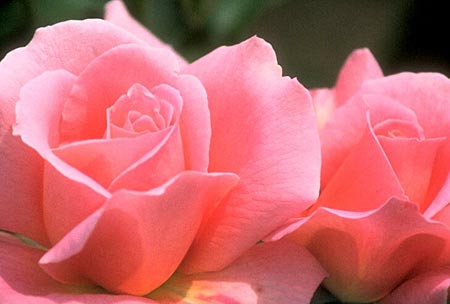
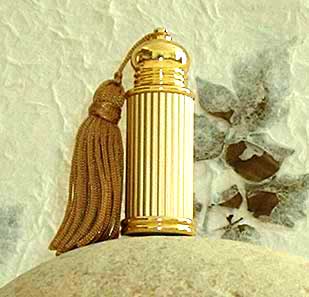
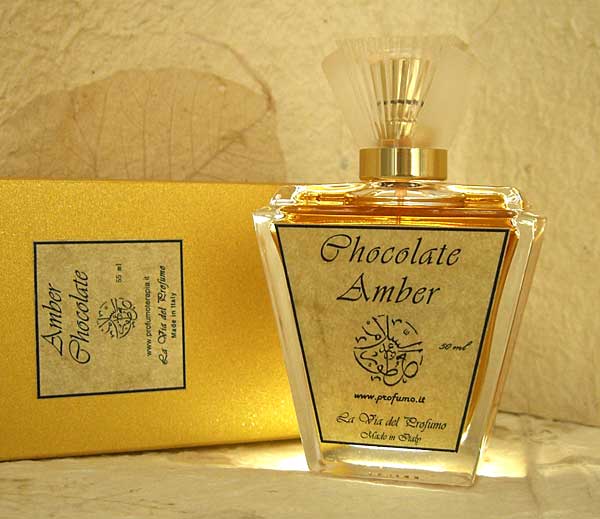
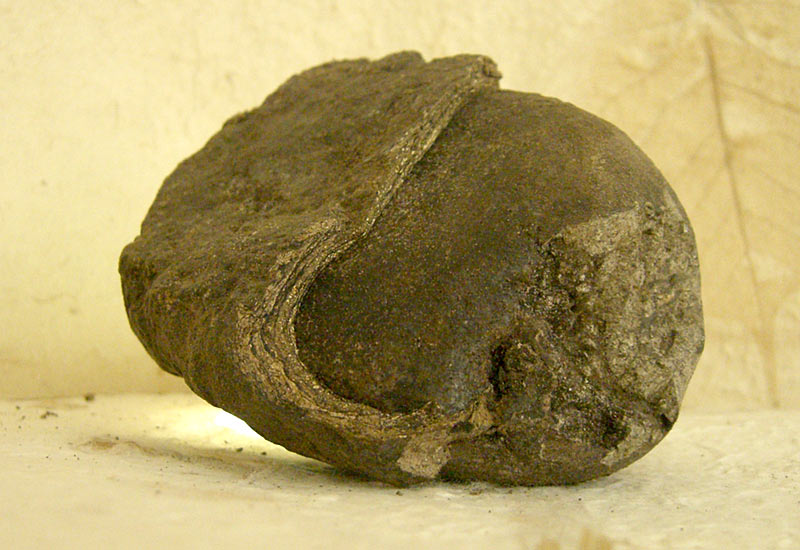
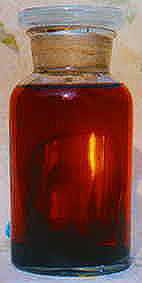
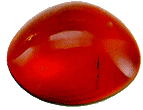
Rose Musk Attar
A blend of Turkish rose essence and absolute with real animal musk Rose essence is one of the most difficult essence to distillate: 6 tons of petals are necessary to obtain just 1 kg of essential oil. Rose 'absolute' is obtained by extraction with the alcohol or with solvents. It is less expensive and its aroma is closer to the aroma of the fresh petals.
Rose is the archetype of flower itself and is the symbol of love, be it profane or divine. Its fragrance gives a sense harmony and security and allows us to overcome our own selfishness and self centeredness. Rose has an affinity with the heart that it livens, allowing it to irradiate the energy of love in our thoughts and our actions. The aroma of Rose harmoniously joins the sacred and the sensuality and helps to spiritualise the sexual relations. It favours the inventiveness in all the fields because it is the preferred fragrance of the angels and 1 inspiration is of angelic nature.
Rose essence is used in psycho-aromatherapy in the cure of mental diseases and in aromatherapy it is a special gift for the women; it prevents the prolepses and the tendency to abortion, calm the spasms and stops the haemorrhages. Rose essential oil has a balancing effect on the hormonal system, useful in menstrual disturbs and during menopause and is a wonderful support, psychologically as well as physically during pregnancy.
Link to Rose Perfumes
Sniffapalooza Magazine Interview with Perfumer
Dominique Dubrana Abdes Salam Attar
La Via del Profumo
By Raphaella Barkley
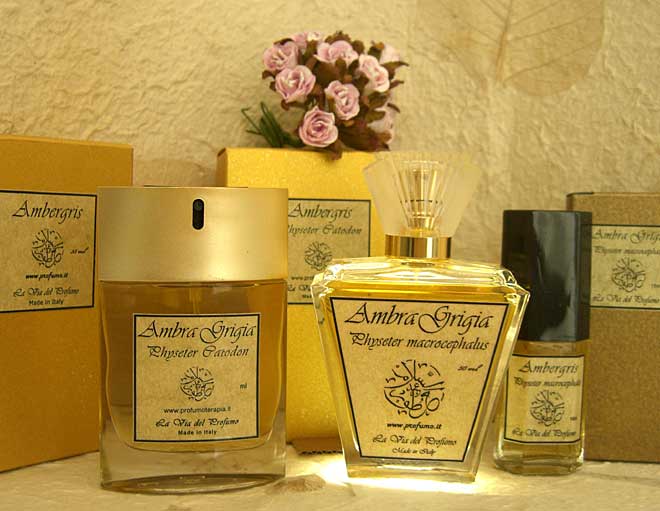
Tincture of Ambergris
Raw Ambergris
La Via del Profumo offers perfumery courses, offers various hard to find products and natural perfumes, buys and sells ambergris and has many articles, a blog and public forum for perfumers and students. Links are included at the bottom of interview and well as links to reviews.
Luca Turin Perfumes The Guides
Luca (Profumo.it) anything anything $$$$
On my table there sits a bottle of a very nice fragrance with my name on it. It was composed by Dominique Dubrana of Profumo.
It by a clever system you will find on his website. You choose the materials you want in the mix (and the price reflects which ones you picked), give him a few more indications and he composes a fragrance for you. It is ideal for people who want a bespoke fragrance but do not have $100K handy. LT
I have a trio named Tania, all interesting variations on the resinous floral theme I gave Dubrana, an all-naturals perfumer who possesses an unmatched gut instinct for where to seek beauty in this exceptionally difficult subset of the art. TS
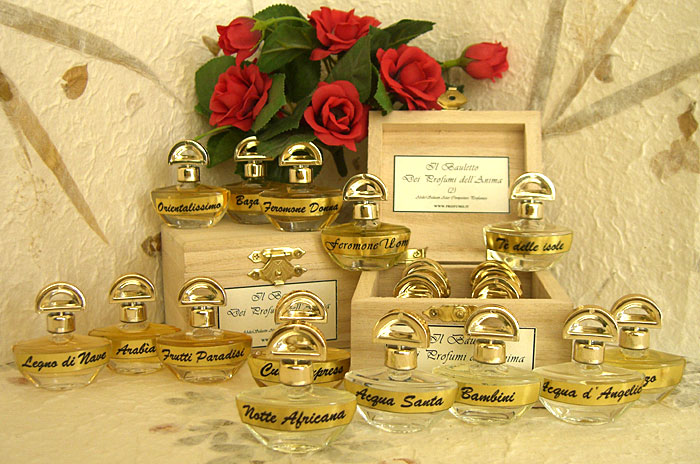
UNDER THE RADAR:
Red Flower
An Exclusive Sniffapalooza Magazine Interview
With Founder and Owner, Yael Alkalay
By Michelyn Camen
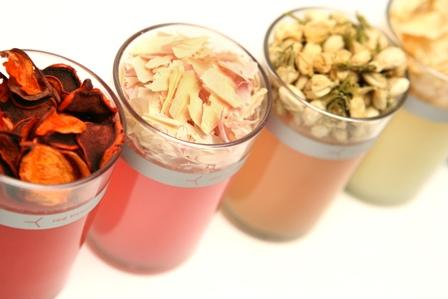
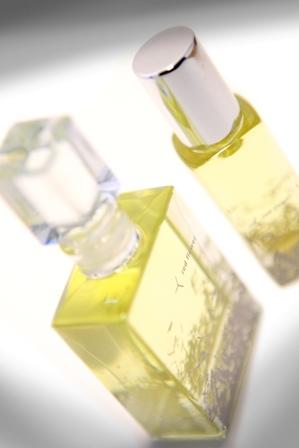
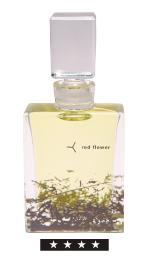
MC: What was the idea behind starting Red Flower and when was the Company started?
YA: Red Flower launched in October 1999 with six Petal Topped Candles, two Organic Teas and a selection of small tea implements and home accessories. The idea behind the line was to begin a beauty and personal care line founded with the intention of transforming simple everyday experiences to their utmost and a feeling of emotional connection.
Red Flower is founded on four principles …sustainability, health and well being, esthetics and world traditions.
MC: What differentiates Red Flower from other Eco-Friendly fragrance/ lifestyle companies?
YA: The depth of our principals, the intensity and rare and naturally cultivated quality of our scents makes Red Flower truly different. The multilayered experience in every product ranges from texture to the story that we pull from authentic traditions that are deeply engrossed in everything that we formulate. We source and produce every product ourselves locally in New York, and we are committed to an environmental mission that includes everything from product ingredients to how we pack and ship products This shows how we truly care about elevating and transforming the moment that one has to experience a Red Flower product. We absolutely care about how people feel when they use the product and go beyond just offering a benefit – we want to be transformative
MC: How important will personal fragrance become to the Company's future?
YA: Incredibly important – Red Flower organic perfumes, Guaiac, Champa and Ambrette are the first trinity. I see growing to include over a dozen scents.
Every scent is a rare and organically crafted expression of the true art and tradition of perfuming oneself. As a company, we want to define a new category of personal fragrance that will be a leader in growing vibrational scents. All Red Flower organic perfumes are synthetic free, certified organic, hand and wild crafted, while all fragrances also are made with pure flower, leaf and bark distillations.
MC: How has Red Flower evolved over the past year and what lies ahead for 2009?
YA: Red Flower is in the process of launching a new spa treatment program for 2009 – Flowers Hold Life™. Flowers Hold Life™ incorporates several techniques and products including a massage oil blend of certified organic avocado oil, jojoba oil and grape seed oil. Also, the Flowers Hold Life™ services will include massages, wraps, soaks, hand & foot treatments and exfoliating body treatments – all which will use the Flower Skin line of body lotions and body washes with scents such as Indian Jasmine, French Lavender, Italian Blood Orange, Icelandic Moonflower and Ocean. Flowers Hold Life™ will soon be on top spa menus such as Canyon Ranch, and the corresponding Red Flower products are currently available at Barney’s.
We are also preparing to launch our third bathhouse and ritual based treatment which revolves around the people of Finland. While deepening our commitment to environmental change, we have been able to begin sourcing more obscure and intense whole flower essential oils. Also, we have cultivated a following amongst boutique hotels by launching luxury bio-degradable bath amenities.
Read Chandler Burr’s FOUR STAR Review of Red Flower’s Guaiac
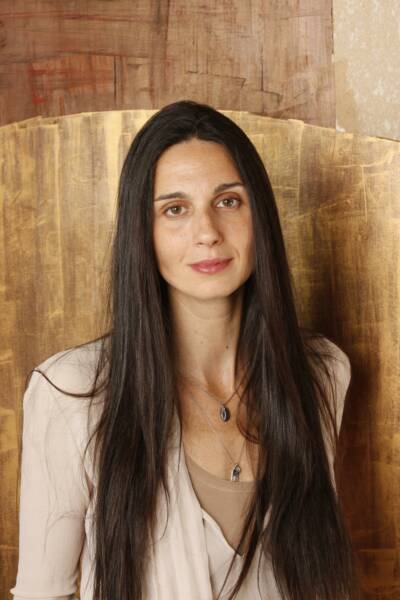

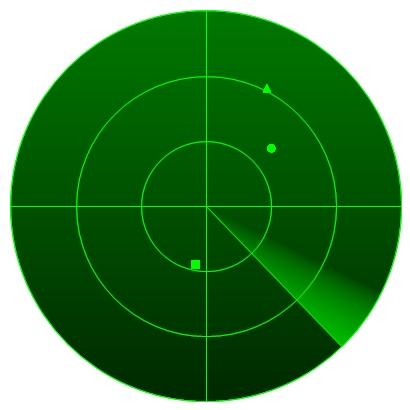
Nature’s Bounty
Aftelier’s Mandy AfteI Introduces Cassis
By Michelyn Camen
The new fragrance Cassis, created by artisanal perfumer Mandy Aftel brings us a fruity and complex all natural perfume inspired by the ripe fruit of an autumn harvest.
The creation of Cassis was an aesthetic challenge for an entirely natural perfume since there are almost no pure and natural fruit essences. Mandy wanted to create a fragrance reminiscent of heavy redolent fruit and the aromas of an Autumnal landscape. A key component to the composition is the rare and fine rum co2 with its intoxicating top notes.
Cassis is aromatic with notes of spices and fruit: Top Notes: blood orange, pink pepper, rum
Middle Notes: jasmine sambac absolute, black currant absolute, pimento berry absolute
Bottom Notes: Black tea absolute, cognac, patchouli
Cassis evokes the trees laden with fruit and the rich autumnal colors of the harvest----- bringing to life the words of the nineteen century painter, poet and mystic William Blake:
“O Autumn, laden with fruit, and stained
With the blood of the grape, pass not, but sit
Beneath my shady roof; there thou may’st rest,
And tune thy jolly voice to my fresh pipe,
And all the daughters of the year shall dance!
Sing now the lusty song of fruits and flowers
The narrow bud opens her beauties to
The sun, and love runs in her thrilling veins;
Blossoms hang round the brows of Morning, and
Flourish down the bright cheek of modest Eve,
Till clustering Summer breaks forth into singing,
And feathered clouds strew flowers round her head.
The spirits of the air live in the smells
Of fruit; and Joy, with pinions light, roves round
The gardens, or sits singing in the trees.”
Thus sang the jolly Autumn as he sat,
Then rose, girded himself, and o’er the bleak
Hills fled from our sight; but left his golden load.”
---William Blake 1783
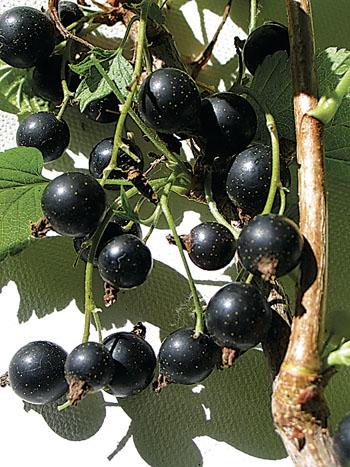
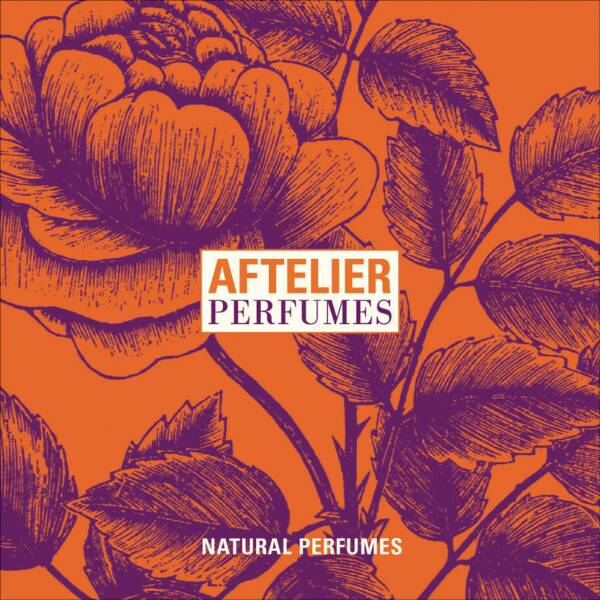
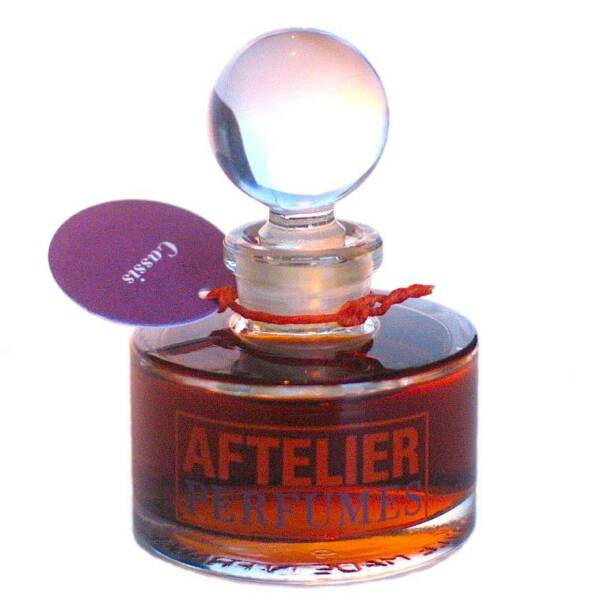
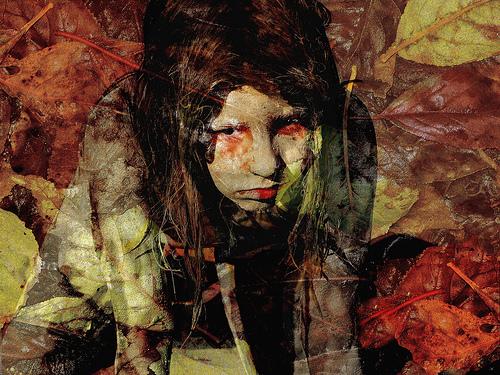
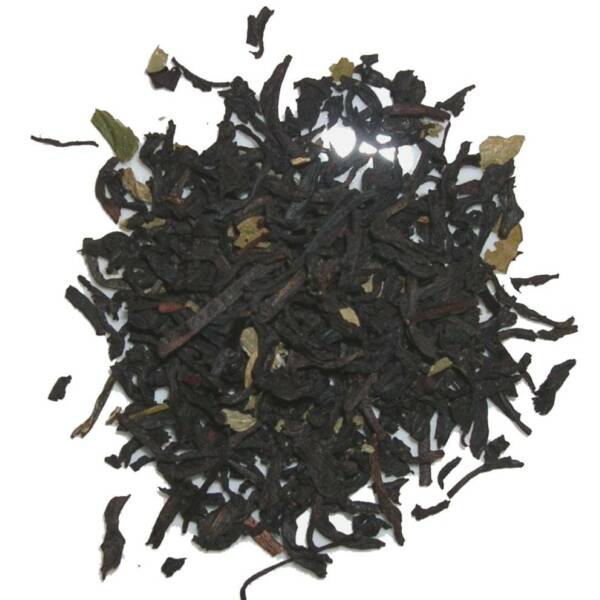
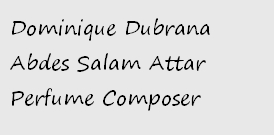
A VISIT WITH MANDY AFTEL
By James Dotson
“ From these scent boxes whose odors once perfumed rosy faces, long ago turned to dust, from these perfume fountains which no longer retain their ‘ scented memory,' and above all from these infinitely graceful and profound pages, it seems that something troubling and delightful, although supremely intangible, escapes: namely, the melancholic odor, the ‘imperishable Perfume,’ of the Past.”
Proust, Contre Sainte-Beuve
Mandy Aftel’s brown-shingled craftsman house is planted smack in the
middle of the gourmet vortex of North Berkeley, immediately around the corner
from Alice Waters’ restaurant, Chez Panisse. After traveling to Paris in the 60’s,
Miss Waters had a gastronomic awakening which eventually led to the “delicious
revolution” of nouvelle cuisine, a revolution that has forever altered our local grocery
stores which now carry fine coffee and exotic produce. Mandy had a similar
olfactory awakening that occurred while she was researching a novel and began
to collect turn-of-the-century perfume books, as she explains in her essay,
“Perfumed Obsession,”: “The books were charming, beautiful and eccentric,
and before long I had amassed a collection of more than one hundred of them.
I felt the thrill of being the first one into the cave that harbored the relics of a lost
civilization....” You can see the passion in her surroundings: engravings of
civet cats, sterling perfume compacts, strange old bottles and all the impedimenta
of a 19th-century lady’s toilette. But of course, center-stage, as it should be, is
the perfume organ with its extraordinary ingredients. Many of her natural materials
represent single harvests or dowager oils which are so limited that they may
disappear after she has composed a scent. Her philosophy is: “ I live on that
edge... it’s not repeatable.”
On the afternoon that I was visiting, she was just back from teaching a class at the French Laundry; it was a special fragrance and aroma seminar for master chefs, vintners and sommeliers. She has a hands-on technique of leading you through various scent combinations, starting with a horizontal pairing (both top notes for instance) and then a vertical pair ( top and base ) where the participants add a drop at a time until they perceive a synergistic locking of the two notes. Mandy has developed her own classification system too, a natural perfumery color wheel that links groups of notes to specific hues, such as the fresh spices ginger and coriander to the color orange. It is a much more accessible key than the family categories like fougere and chypre, and it is significant that she has chosen a symbol system that is entirely natural (the physical spectrum of visible light) as her guide. Her website has a kit and workbook that allow you to experiment at home if you can’t make it to a class in person. Or you can hone your nose by mixing the essence minis with one or more of her perfumes. My recent favorite pairing was layering her Leather Essence over Tango which made for a serious slice of Marlene Dietrich style smoky floral goodness.
For the connoisseurs, Mandy offers a few of her obscure essential oils and absolutes at Aftelier.com. There is a rich boronia that smells like freesias and creme de cassis, and an antique patchouli which is the most ethereal precious-woods patchouli you will ever smell. But here’s the amazing super secret find: Africa Stone Tincture, which is a cruelty-free alternative to civet and castoreum, a product freely given by the fluffy little rock hyrax when it relieves itself in the wilderness. This animalic stuff has a remarkable ability to resurrect perfumes that have been gelded by modern reformulators. I added a miniscule amount to Chanel’s Cuir de Russie and it was as if the composition leaped into a fourth dimension. Just don’t use it straight out of the bottle unless you want to feel like a giraffe is squatting upside your head. I have two bottles at home for perfume restoration purposes.
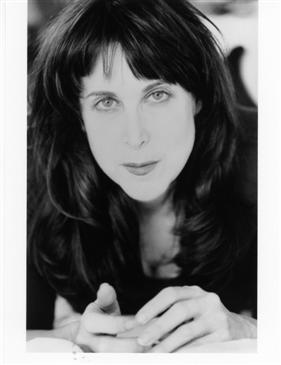
Mandy Aftel’s approach to creating artisan natural perfumes is based in the quality and integrity of the ingredients. Unlike most commercial perfumers, for her hand-crafted liquid and solid perfumes, Mandy chooses from among more than five hundred of the finest natural essences found anywhere in the world, using organic or wild-crafted oils whenever possible. The materials that she loves working with are often expensive and she wants the creative freedom to use not just one or two but several in a blend. Most of the all-natural fragrance materials that she uses cost between $2,000 and $14,000 per kilo. She uses no artificial colors, no synthetic fragrances, no petrochemicals, no phthalates, and no parabens.
Cassis is available in one quarter ounce ($150) and 2.2ml mini size ($45). The one quarter ounce perfume comes with a complimentary mini kit. www.aftelier.com
The Natural's Perfumers Corner
What differentiates your fragrance from other natural fragrance lines?
It has been said my perfumes are well-constructed with proper proportions between the base, heart, and head notes; contain some
interesting accords and background notes due to my personal tinctures, some of which come right out of my organic botanical garden;
last a long time as a result of my way of formulating and what I’ve come to learn about the secret of a great perfume; and are different because of the way I use bridge notes and accessory notes. I use cruelty-free ingredients and as I replace the spent oils, organic choices are made. It is important to me that I trust the essences I use. Sourcing the botanicals from reputable suppliers is crucial in creating safe and natural products. I have created several dozen tinctures to use as the basis for my formulae. This makes them unique. All of these ingredients are used in a way that won’t harm another. As we all know, just because something is natural does not mean that it is totally safe. I keep
the drops of essences to safe levels and stay true to my first rule, which is Do No Harm.
Probably any perfumer worth his or her salt could say all this about their perfumes. What I have been told time and again is that there is a special energy the wearer feels when they use my perfumes. It makes them feel delicious, like they have a naughty secret; like - if only you’d come closer you would be able to smell the real me; and, it calms them down, takes away their pain, relieves them of their cares and worries. These are some of the comments I receive. Each completed perfume is placed in the bottom of a Tibetan Bowl with a circle of crystals surrounding it and infused with sound and light energy for a period of time while it matures. It’s the love-element of Spirit Energy that
infuses my perfumes, the depth of the aroma, the feelings that are experienced, the memories that surface, and the lasting qualities that set them apart. That being said, each person will find the perfumes and perfumer/s that is right for them. My perfumes may not please everyone and that’s okay.
There must have been a defining moment that led you to become a perfumer. How did that happen?
I have always wanted to know everything I could about flowers; I’m a nature girl from way back! It seemed like a natural evolution to go from having a flower business to making more ethereal “bouquets.” I didn’t start out planning on going into the perfume business, I just started making perfumes and giving them away as gifts, and having fun packaging them using my collections of antique bottles and laces and ribbons. People really responded to them, and it was so meaningful to me to be able to share the joyful, intensely wonderful feelings these scents brought to me. Once I knew I wanted to put my perfumes out into the world, I started thinking seriously about bottling them and then creating these treasure pouches to house them. I wanted every part to be as beautiful and magical as I could make it, so that each aspect is in itself a gift, from the perfume itself to the bottle or jewel-box, the pouch or purse, and the little Victorian-style scent card that accompanies each scent.
Can you tell us what Natural Perfumery means to you?
In the same way that “organic” can mean a lot of different things now, and you have all these other factors coming in as well, like local, sustainable, and biodynamic, the label of Natural Perfumery can be looked at from a lot of different angles. My work as the perfumer of Velvet and Sweet Pea’s is a culmination of all my artistic passions, but it’s also an expression of my values and ethics. One of my main goals is to help educate people about what goes into the creation of perfume so they will be able to make informed choices, and with that in mind I’ve actually created my website to be an extensive educational resource about perfume, where people can learn about natural perfumery and all the elements that go into this art form.
I choose to make natural perfume –perfumes which contain no synthetic ingredients – for the health of people and the planet, and I try to source all my materials from organic, sustainable, and wildcrafted sources. My use of the word “botanical” for my perfume is also key to one of the core principles of the Purrfumery. Some natural perfumers use animal products (such as civet cat musk or beaver castoreum) in their perfumes. It’s not currently well-known that the way these are harvested from the animals is terribly cruel, and in some cases species-endangering, but as an avid lover of animals I find this a completely unacceptable trade-off for the scent and staying power of these musks and other products. Fortunately, after some experimenting, I have found plenty of botanical base note accords that allow me to create long-lasting perfume.
After many months of work, the Purrfumery has officially received its Leaping Bunny certification, which certifies not only that I do no animal testing (of course!) but also that none of the ingredients I use have been tested on animals by the companies we buy them from. This was a long process because it involved contacting and receiving documentation from each and every supplier I deal with or may deal with in the future – no small job as I source ingredients from all over the world!
I make all the perfumes here in my perfumery, and I also make many of the ingredients that go into the perfumes and the other products. I make house-infused organic alcohols with honey, vanilla, and roses from my “perfumer’s garden” and hand-tincture flower essences.
I use beeswax and propolis from my own beehives. I design all the
packaging – the little silk bags and pouches and scent cards – taking inspiration from my collections of antique perfume bottles, Victorian trade cards, and laces and fabrics.
I create each perfume to be a collector’s item. The perfumes are made in small, numbered vintages, and the rarity of the ingredients alone ensures that only a limited number will ever be created. In earlier eras, a perfume bottle was a precious thing to treasure even long after the perfume itself was gone, and it is this tradition that I try to continue with my own creations.
Could you please tell us a bit about your background leading up to your career in perfumery?
I’ve always had my own businesses, ever since I got out of high school. Early on, I hand-made one-of-a-kind lingerie pieces which I sold to high end stores like Bendel’s and I. Magnin. Later I had a wedding flower business. I have always loved making things, and I adored creating bouquets and arrangements and embellishing them with beautiful French ribbons, and I also loved connecting with my clients and working with them to bring their visions to life. The business was very successful, but after 15 years of winery weddings in Napa I wanted to do something that didn’t require me to get up at 2 a.m., work on weekends, and work exhausting 80-hour weeks.
When I discovered the world of perfume, I was immediately enchanted. I basically locked myself in a room for a few years and just experimented, playing with essential oils, these amazing ingredients from all over the world, and teaching myself from antique books, like my beloved Art of Perfumery from 1855. My perfume education is grounded in what I call the “golden age of perfume,” before the use of synthetic compounds in perfumery. At that time I also started keeping diaries of how the oils made me feel and how they affected me – coming to my own understanding of the therapeutic and mood-enhancing properties of different scents.
Tell us about some of your favorite fragrances you’ve created.
One of my most popular perfumes, Songbird, is one of my own favorites, and also the first perfume I created that I felt was a true “perfumer’s perfume.” Songbird is just sexy and delicious, opening up with beautiful Italian blood orange and then moving to the richness of boronia, tuberose and orange flower. The scent is intensely, richly floral and softens down to a creamy sandalwood and vanilla finish. The sillage is spicy and alluring with notes of nutmeg and antique cinnamon. I always wear Songbird when I have speaking engagements or public appearances because it makes me feel confident and ready for anything.
My most mysterious perfume is probably Narcissus Poeticus. I think it is truly unique; I’ve never smelled anything else like it. The perfume is filled with the scents of the arrival of spring, very green and gently floral with a hit of berries. It has osmanthus, black currant bud, violet leaf, orris root and narcissus among many more. Plants that hold the power of spring in their roots, buds and leaves. It is rare to find narcissus poeticus and there is very little in the world, so it was a joy to be able to work with this incredibly evocative essence.
My cologne Terrain was originally made for my husband, Gary, a landscape architect. It’s based on some of his favorite scents from our garden, the citrus trees and our thirty or so varieties of scented geraniums. The cologne contains hand-tinctured elements from the garden including attar of roses, and lemon, orange, and lime geraniums, as well as Japanese yuzu and frankincense for rich and invigorating top and bottom notes. Gary is definitely not a “perfume kind of guy” but he and many other “non-perfume people” love this scent!
Jewelry of Heaven is my homage to 19th- and early 20th-century perfumes based on the classic jasmine-rose fond. This is a very timeless, serene scent based on rose, jasmine, vetiver, and sandalwood. The perfume has a very pretty, inviting sillage, and dries down to a soft, powdery finish. It’s calming, rich, and floral and gives me a sense of peace whenever I wear it.
As a perfumer, where do you find your inspiration?
All of the materials are my inspiration. I’ve always loved flowers and gardens and am totally in awe of the profound richness and
complexity of nature. My “perfumer’s garden,” which Gary and I planted with my work as a perfumer in mind, serves as both a
place to meditate and be inspired and as a crazy laboratory for experimentation and creation, the place where I harvest ingredients
and come up with some of the unique techniques I use in my perfumes. Living symbiotically with the plants in my garden
are two hives of bees. I love to use beeswax, propolis, and honey from the hives in my perfumes – after all, these are nature’s
own distillations of flower essences! I also continue to be deeply inspired by the historical context of perfume, from its sacred roots in ancient times to the more courtly, aesthetic role of perfume and the romantic “language of flowers” in the 19th century. In my twenties, when I would travel to Europe to find antique laces for my clothing design business, I would find myself drawn to the perfume areas in the South of France. I visited Eze and Grasse, toured Fragonard and learned about the ancient history of perfume in that region. I was fascinated by this secret, mysterious art, little imaging one day I would practice it myself!
Where are your fragrances available for sale at and what is your web site?
For the last few years I've been focusing very hard on the perfume, the packaging, the design, and the alchemy, and then putting the website together and keeping up with orders through the site itself. But now I am just starting to look for a couple of retail venues that will be a good match for me to put myself out in the world. The perfumes could never be mass produced and I can only make a limited amount so I am carefully researching my options.
All my perfumes are available now at www.Purrfumery.com. The Purrfumery carries not only liquid and solid perfumes but also cologne, bath salts, hydrosols, and body oil. Each product has its own elaborate packaging, and each of the perfumes also comes with its own Victorian scent card. In addition to visiting the Purrfumery online, I can be found through local sales in the Bay Area around the holidays (the best way to be notified about these is to sign up for my newsletter through the website) and it is also possible to make an appointment to visit my perfumery.
Thank you so much to Raphaella and everyone at Sniffapalooza! You can contact Laurie Stern also at laurie@purrfumery.com
You truly have an amazing selection of fragrances with names such as: Bois d’ Hiver, Espionage, Film Noir, Fête d’Hiver (Winter Festival), Autumn, Song of Songs and so on…where do you get your inspiration?
The perfume names are an inseparable part of my creative process. There is a story behind each perfume and its name - sometimes too long to tell and better told by the fragrance itself. More than anything else, people and nature inspire me. Some even quite obviously so, bearing a person’s name (i.e.: Tamya, Megumi, Yasmin, Zohar), a season (Autumn, Fete d’Hiver, Bois d’Hiver) or a particular fragrant flower (Lovender, Rosebud, InCarnation, Yasmin, Viola). Inevitably, I’m profoundly inspired by my own culture and personal experiences. Many of my perfumes have roots in the Middle Eastern (Finjan, Razala, Sahleb) and Jewish cultures (i.e.: Song of Songs). Other names are more subtle and the story behind them is quite personal, such as Indigo, which was originally created for my mom even though the name doesn’t imply so.
So not only do you produce floral scents you have a full range of Orientals and Chypres, Fougère, Leathers, Fougère Ambery, Fougère Fresh and so on, this is very fascinating because I have never seen a natural perfumer with so many types of fragrances-Please tell us about this-
The concept behind Ayala Moriel’s ready-to-wear line is to offer customers the option of a personal scent – an alternative to the more lengthy and costly process of creating a custom scent. I believe there is something for almost everyone in this collection; at the same time, it’s very unlikely that you will smell like everybody else even with my ready-to-wear, because they are so unusual and not widely distributed. Also, there are so many to choose from that even if all your friends like my perfumes you will most likely choose different fragrances.
The collection also represents a full scope of what I can do using only naturals, so it gives a very good sense of the possibilities for private label clients who want to create their own all-natural fragrance line or scented body or home products. In a sense, the collection is my portfolio and a showcase for natural perfumery: They are not just products for sale, they educate the public and promote the concept of natural perfumery by showing you that despite its significantly limited palette (i.e. around 300 notes as opposed to several thousands used in synthetic perfumery) – the sky is the limit with what you can do.
Tell us about your fragrances named after novels: l'Écume des Jours and l'Herb Rouge.
Boris Vian was my hero for the longest time not only because of these two stunning novels and their poignant sense of truth and beauty; but also because he was what I always aspired to be – a Polymath*. These two books are my favourite (not much of his work was translated to other languages though). l'Herb Rouge means “Red Grass” and tells the story of two men who built a time machine and their search for self-redemption through self-destruction. The main character, the engineer and inventor of the time machine, travels to his own past through the time machine, each time shedding another layer of his memory until none is left. When creating l’Herbe Rouge, I was searching for a scent that will stir within me a deep, unexplainable memory and emotion. Early on I knew it would be a Fougère. Something about the depths of hay, oakmoss and patchouli resonates very deeply with my own childhood memories - and along with lavender, lemongrass, juniper and cloves it created what I felt was the right mood – mysteriously familiar.
l'Écume des Jours was far more challenging. Perfecting it span over the course of 4 years. I really wanted it to be as perfect as the book is. I don’t know that I’ve succeeded but I feel that it represents the full range of happiness and melancholy that life’s beauty encompasses, and the magical mood of the book. In l'Écume des Jours, Vian created a universe that abounds only to the rules of love and beauty. Therefore, it starts out perfectly good and grows to its height only to completely collapse and deteriorate into a completely unhappy ending. It may sound pessimistic but it represents a profound truth if you think about it. Being aware of the cycles of life, it is only from the state of complete death that new life arises. Perhaps the following will make more sense especially in the context of perfumery - l'Écume des Jours “sketch” which I’ve posted on SmellyBlog:
Please tell us about one of your new perfumes-Immortelle l'Amour.
Immortelle l’Amour was launched in winter 2008, so it really isn’t all that new. Since than I’ve also launched Vetiver Racinettes (in the summer), a vetiver soliflore that is rich and complex with many different kinds of vetiver from different parts of the world (Haiti, Sri Lanka, India, Surinam, Indonesia) as well as some artisan distillations of vetiver (ruh kush, attar mitti) combined with spices to create a vetiver that has hints of cooling root beer notes.
And this month (October 2008) I’m launching Sahleb, a limited edition, which is far more limited than I ever intended it to be as the particular type of orris butter I used (a high quality Florentine iris with 15% irone – the molecule that gives iris its creamy, violet-like fragrance). I am hoping to get more of this unique iris in the future and make another batch of this buttery-starchy dessert perfume. Hopefully with your support I’ll be able to source more, and if the demand for Sahleb remains, it will become part of my permanent collection (I think it deserves it!).
Editors insert: From the website:
Ayala Moriel is proud to introduce: Sahleb - the perfume version of a Middle Eastern winter favourite. This scrumptious pudding beverage, flavoured with rosewater and crushed mastic resin is offered by street vendors straight from a copper caldron throughout the cooler seasons across the Middle East. Served warm and topped with coconut, pistachio and cardamom, Sahleb has become an essential part of winter and a way to make even the gloomiest street corners cozy and home-like.
The creamiest orris root from Italy was used to create the smooth texture of this starchy and soothing pudding-beverage. A hint of the finest rose otto from Turkey, coconut and butter essence and crushed mastic resin complete the exotic flavour, and finished with a hint of vanilla and nutty ambrette seed Sahleb is ready to seduce you into winter!
Top Notes: Coriander Seed, Rosewood, Mastic Resin . Heart Notes: Orris, Rose Otto, Butter . Base Notes: Ambrette Seed, Coconut, Vanilla Absolute
I understand that you had a fragrance that launched this past spring called Gaucho that has animalistic-leathery undertones; can you tell us about that?
Yes, Gaucho launched in spring 2008 with an accompanying perfumed tea and was also featured just recently on Body + Soul magazine.I started working on it since my very beginning in 2001, inspired by the mood of the Steely Dan album. I wanted to create something bold and unusual that evokes the feel of expanded open space and the melancholy of human solitude against the vastness of nature. Gaucho is one of the perfumes that I have been most open about it’s process and wrote about it quite in detail over my blog in a series labeled “Gaucho’s Journey”.
There must have been a defining moment that led you to become a perfumer. How did that happen? What led you to this journey?
My dream started when I was helping a family from the village for a day in their lemon verbena harvest. Even after spending an entire day removing the dried leaves from their stems (which was quite painful actually!) I felt rejuvenated and extremely happy just because of the beautiful smell. It made me dream of having a soap factory that makes only lemon-verbena scented olive-oil soaps.
Of course I never did do exactly that; but thankfully there was another defining moment in my life: moving to Vancouver - a city so moist and dull at the time (1998) in both culture and fragrance that I had to recreate my own scented environment and inject some perfume to it in order to survive emotionally. Many of my perfumes represent scents that I miss in my home country, where every street corner is fragrant (not always a good thing but it sure makes things more interesting!) and there is a huge variety of fragrance in the native flora. Here in Vancouver it’s all coniferous and maybe on a slightly warm day (it never gets really warm here) you could smell hints of salt from the Pacific ocean or whiffs of cherry blossoms in the spring – but you have to try really hard to notic
Sniffapalooza Magazine Interview with
Natural Perfumer Persephenie
Persephenie is the founder of Blunda Aromatics and is a Certified Aromatherapist and a perfumer
that specializes in natural materials. Persephenie makes Custom Scents, art when possible, is a part time
doula, and loves bringing people closer to nature, through the olfactory, with rare scents from around the world. Blunda is a Swedish word that means to "close one's eyes." Persephenie is also owner of Blunda Aromatics, an intimate romatic boutique and studio in Los Angeles. Blunda Aromatics specializes in a wide range of Natural Botanical Perfumes, Essential Oil Pharmacopeia, Exotic Perfume Materials, Classes and Education, and
Collectible Treasures. I had the chance to meet Persephinie in Los Angeles this past year, she is a lovely, gracious and warm woman and we are proud to feature her here. You can also read about her upcoming event is Los Angeles, CA
Persephenie, what led you to perfumery, especially natural perfumery?
Aromatherapy and painting led me to Natural Botanical Perfumery. Although there is creativity in Aromatherapy, its main purpose is therapeutic and medicinal. Perfumery, like painting, gives you freedom to go in many different directions,
to create a multitude of layers, and of course to fashion your own story. And, like a painters colorful pallette, a natural botanical perfumers scented organ offers materials with diverse viscosities, textures, levels of intensity, wateriness, and opaqueness. All this needs to be understood in order to appropriately work with the materials. I am especially fond of the naturals for their supreme authenticity and richness.
What differentiates your fragrances from other natural fragrance lines?
Me of course! The beauty of the Natural Botanical Perfumery movement is in the spirit of not following trends, but rather to follow your own integrity, aesthetics, and judgement. What differentiates my fragrances from other natural fragrance lines is not only the individual aromatics that I am attracted to, but also how I put them together, and construct them as a whole.
Tell us about the Persephenie Body Care and Perfumes you are launching in May 2009.
I ve been developing my own body care and perfume formulas that I feel proud to share. The Persephenie body care is completely natural, made in my studio, with special ingredients such as wild harvested Blue Green Algae from Oregon in the L'orangerie by the Sea body polish. The Nanu Lei Butter is rich and restorative, with Organic Calendula and Helichrysum, and the Nanu Lei Bath fizzy bath wonders smell so heavenly, they take you on a euphoric escape. My approach to perfumery is different than the Persephenie body care line. Although I'll be introducing beautiful scents to embellish the body, I m also having fun creating perfumes in a conceptual light. For example, when my son was six, he created this character called the Spirit Scientist. The Spirit Scientist not only studies the spirit, but also is all knowing in love, secrets to the longevity of life, destruction, super strength, and more. I ve taken this Spirit Scientist character and made perfumes for all his powers, to enhance these special gifts. Everything from the scent to the packaging supports this concept. There is so much thought and work into each of my perfume projects and their presentation, I realistically can only make a limited amount.
Where will your fragrances be available at?
The Persephenie body care will be available at Blunda Aromatics, in the store as well as on line, and at Vert in Venice. Because of the degree of labor and expense, for now, my perfumes will only be available at Blunda Aromatics.
What power do fragrances have over people, do you think, if any?
Fragrance absolutely has power. I experience and see it ever day in my boutique. Enthusiastic first timers always need to smell everything. They are intrigued and want to be moved. Smell is of course a crucial primal sense that can detect danger, lust, food, attraction, and more. There is often an association or memory that visitors seem to unconsciously search for when sampling the different scents. Some are knowingly seeking comfort in a particular scent, whether for mental, spiritual, or physical use. Others are looking for perfume that best decorates and elaborates who they are.
Why do you think so many woman and men are part of this fragrance explosion, especially the niche and natural trend?
My experience and feeling is that the niche perfume trend is successful because consumers are tired of mass commercial items that smell similar.
They are not only looking for a scent that best elaborates who they are, or who they want to be, but they are seeking perfume that compliments their individuality. People are unique with diverse character. What a better way to convey this uniqueness, through the intimacy of a specialized scent.
The natural perfume trend comes from the desire to use products that are both marvelously original and healthy for your body. Natural perfumes are so special, because they use real ingredients from nature and not from a laboratory. Natural ingredients are challenging to manipulate! The art of natural perfumery takes real commitment, patience, and experience to master. Natural perfumes do not claw or cling, they will not invade others personal space, and they feel really great to wear. Their genuine authenticity is celebrated and unequivocal.
You teach classes in perfumery, own a boutique, and are a Certified Aromatherapist and a perfumer. How do you manage it all?
I am enormously inspired and excited about the world of aromatics. There is so much history and culture rich under this umbrella of perfumery, that I am continually stirred. Not only do I manage all this with exhilaration, but, a fantastic assistant, supportive clients, and the pillars of my family have been and continue to be absolutely crucial.
Tell us about your upcoming events for all the Los Angeles people that are interested.
Starting in late March 2009, Blunda Aromatics will begin show casing Natural Botanical Perfumes each month. The inspiration to create these shows comes from wanting to share these very special perfumes as individual works of art. So much patience, thought, and energy go into creating Natural Botanical Perfumes. They are more than just natural . The materials can be difficult to work with or to come by, you have to patiently wait for perfumes to age before presenting them, the materials can be incredibly costly, and so much more. Many, if not all of these perfumes, are formulated by a solo individual with a strong passion for perfumery, nature, and spirit. Each of these events will focus on one niche perfume, their natural botanical perfumes, and many other aromatic sundries they create.
I'm kick starting the exhibition on Saturday, March 28, with Laurie Stern
of Velvet and Sweet Peas Purrfumery. Her perfumes are beautiful and so feminine. They are easy to fall in love with. The packaging is meticulous, whimsical,wonderfully magical, and romantic. You can see (and smell) all the care and
artistic integrity that has gone into the whole of her perfumes. This will be the first time she is in a boutique, so it is exciting for both of us.
Other talents the exhibition will include are Bay Area perfumer Yosh Han from YOSH olfactory scents, Colorado perfumer Dawn Spenser Horowitz from DSH Perfumes, and Vancouver perfumer Ayala Morial, from Ayala Morial Perfumes.
All the perfumers will be present to talk about their inspiration as well as answer questions. There will be tea and nibbles sponsored by local LA producers. The celebrations will be something along the line of a perfumery exhibition
with high tea.
304. So. Edinburgh Ave
Los Angeles, Ca. 90048
1 Blk. West of Fairfax, South of 3rd St
(323) 658-7507
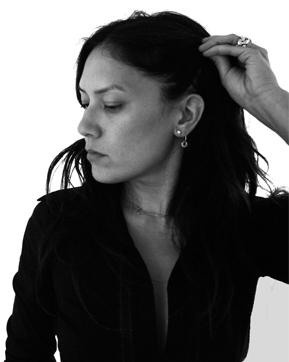
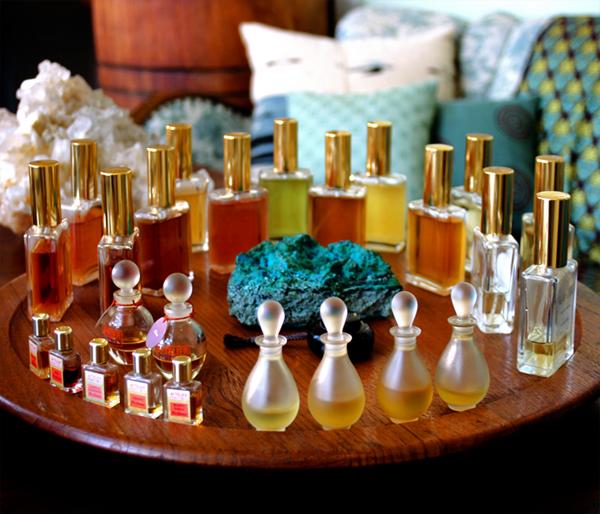
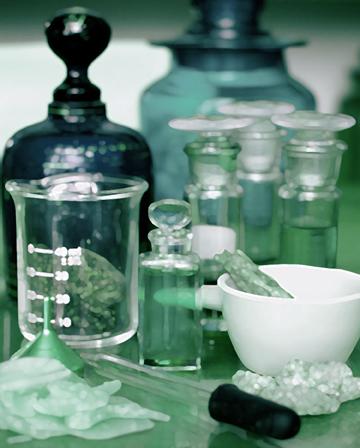
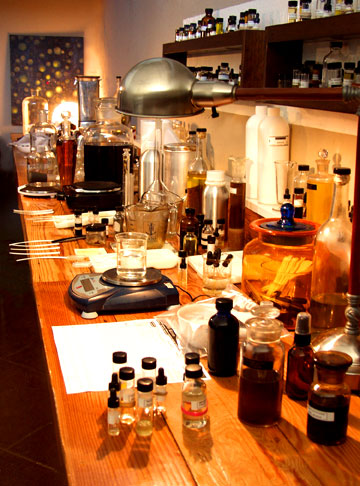
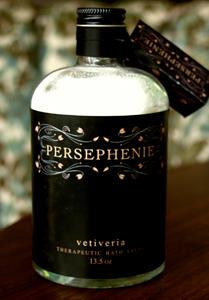
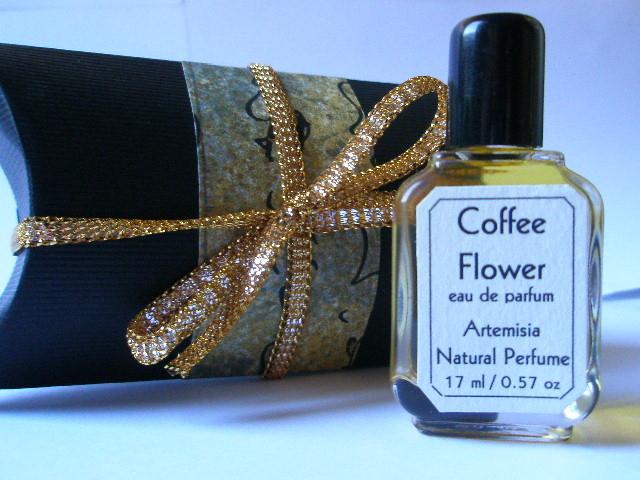

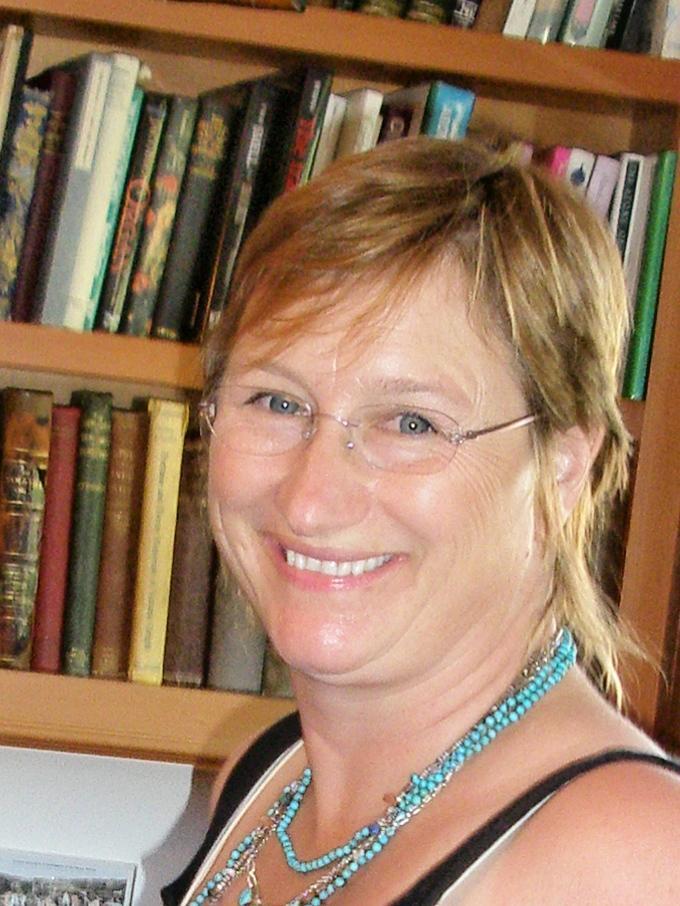
Sniffapalooza Magazine Interview with
Natural Perfumer Lisa Fong Artemisia Natural Perfumes
Lisa, can you tell us briefly about yourself?
Most of the Natural Perfumers I know had many different careers before discovering natural perfumery. I never thought I’d be making perfume.
I never even liked perfume. I only wanted to play my violin.
Could you please tell us a bit about your background leading up to your career in perfumery?
Music is my passion. I’ve played violin for most of my life. I made the decision play professionally later in my life than most. I studied,
practiced and went back to college to do graduate study in music. I played in local orchestras and taught violin. I was getting nearer to my
goal of playing professionally when I started to get neck pain. I had spinal stenosis and had two surgeries on my neck. I ended up with
chronic neck pain and had to quit violin. It was really hard..
I have always loved working in abstracts. I majored in Mathematics at Mills College and did graduate work in mathematics at U.C. Berkeley.
Most people stopped their study of math with algebra or calculus. But beyond that, mathematics becomes so beautiful. I wish more people could experience this side of math. Math and music have given me a strong mental discipline that has helped me in my ability to understand perfume. However, I don’t think music is at all like perfume as many claim. The physical properties of sound are not the same as scent. However as a musician, I have developed an artistic understanding that greatly contributes to my experience of creating fragrances.
There must have been a defining moment that led you to become a perfumer. How did that happen?
After I stopped playing violin, I felt empty and lost. I had so much free time since I was no longer practicing. I read a lot and came across Mandy Aftel’s Essence and Alchemy . I loved the book and soon after I read it I saw a flier for her class on Natural Perfumery and signed up. I was not a big fan of perfume. But the natural essences I was discovering overwhelmed me with their beauty. I had not experienced this beauty in the perfumes before. I was fascinated by the idea of blending these exquisite essences to create a perfume. In the beginning natural perfumery seems simple. By sticking with the basics, one can make a lovely fragrance. Dig a little deeper with more complicated materials and natural perfumery reveals itself to be a very difficult undertaking. One needs to approach blending every day with greater care and sensitivity. I understand now that natural perfumery is a lifelong learning experience.
Can you tell us what Natural Perfumery means to you?
I believe natural perfumes must be 100% natural and I define natural materials as those created by the DNA in living organisms. If it was not created by DNA, it does not come from a living source and it has no place in natural perfumery. The special, gentle aspect of natural scent is ruined when synthetics are added. I think of naturals as being like acoustic instruments, which use the resonance of wood or brass to amplify the sound. Synthetics are more like electric instruments which can create a limited kind of music, but it lacks dynamic coloring and musical nuance.
Tell us about your favorites of the fragrances you’ve created.
My current favorite is a new fragrance, Coffee Flower. It is made from the flowers of the coffee plant . The flower is a white, star-shaped blossom with an unique essence similar to gardenia. The scent of the flower is rich and exotic, yet not too heavy. I love the contrast between the narcotic essences of coffee flower and jasmine with the dry notes of cedar wood and cardamom. In the perfume, coffee flower is blended with golden cognac, Mysore sandalwood, jasmine, vanilla, Himalayan cedar wood, whole cardamom, and antique clove.
What is the oddest ingredient that you have used in natural perfumery?
I am currently working on a new fragrance called Ondine which contains seaweed absolute. Seaweed is hard to work with, but it is very nice in this blend.
As a perfumer, where do you find your inspiration?
The natural materials I use to create perfume are my inspiration. An essential oil is comprised of many different notes. Some of these notes I enhance by blending with similar or opposite aspects from other essences. I have synesthesia and see colors and textures associated with scents. These images help form my fragrance ideas.
Were you inspired by any one perfumer?
Mandy Aftel is one of the first to write about natural perfume in detail after natural perfumery all but disappeared after synthetics took over. The art of perfumery has maintained a curtain of secrecy, but Mandy’s book Essence and Alchemy made natural perfumery open and accessible to all. Readers learned about natural materials and how to structure these to develop a fragrance. She originated the current trend of natural perfumery. She has vision, an open heart, and makes innovative perfumes.
What was your favorite fragrance growing up?
I used to love Opium back in the day.
Which famous fragrance do you wish you had created?
Maybe Fracas, I love tuberose.
What power do fragrances have power over people, do you think, if any?
Or sense of smell links instantaneously to our brain. It is our most primitive and powerful sense, which we humans do not understand or appreciate. It’s interesting that most people hate having odors imposed upon their personal space. Foul odors anger us and pleasant odors bring peace of mind. Our intense reaction illustrates how important the sense of smell is to us. I believe scent influences us in a way far beyond our awareness.
Why do you think so many women and men are part of this fragrance explosion, especially the niche and natural trend?
I think the public is getting kind of tired of the fragrance industry. Increasingly unwanted fragrances are creeping into every corner of our lives. We want scent to be meaningful, interesting, beautiful, and discrete. As far as I know, there are only about three or four corporations responsible for almost every scent used in consumer products. These giant firms provide perfume for well-known fragrance companies to market. They invest huge amounts of money marketing their products and play it safe with the kinds of scents they introduce. Consequently, there is little room for innovation. Most of the scent materials are quite inexpensive and the cost of these scent come mostly from advertising. Smaller, more independent perfumers are able to venture in new directions. Natural perfumery is entirely different from other fragrances. There is a grace and elegance in naturals, which most of the public is unfamiliar with. There is a place for natural fragrance in the market. Because of its artisan nature, it can grow and develop freely, unhindered by the singular motivation of profit.
Is there anything else you would like our readers to know about you or your perfumes that we have not discussed?
In my fragrances I strive for a unique and interesting scents that will lead the wearer to unexpected places where other perfumes have not gone before. I try to make fragrances that have an unexpected twist by using unusual materials or strange combinations that are still beautiful. But above all, I desire that my fragrances blend into a beautiful, cohesive whole that will give joy to the wearer day in and day out.
Where are your fragrances available for sale at and what is your web site?
Artemisia Natural Perfumes are available at our website www.artemisiaperfume.com.


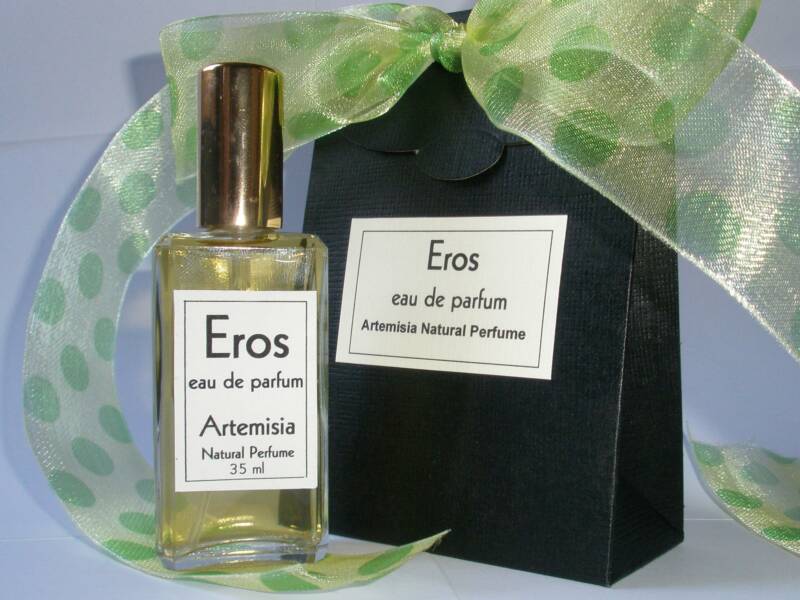
EDITORS NOTE: The Naturals: A recent addition to Sniffapalooza Magazine was the inclusion of a page dedicated to "naturals" so that they could express their own views in the magazine. I believe that perfumers from every part of the industry should have the opportunity to be heard. My approach has been to let individual readers decide who they wish to seek out. I believe that natural perfumers should have a chance at the same amount of exposure as all other perfumers and houses. It was gratifying to find that the response from readers was overwhelming in their support. Everyone is welcome into "our house", perfumers small or large. I do not care if a fragrance is "natural" , "semi-natural" or not; not all pure "naturals" agree with me and "natural" does not automatically mean "superior". Some people are allergic to certain naturals. All I care about is a fragrances artistic beauty, the quality of a fragrance and how it makes me feel. I also own numerous gorgeous natural fragrances. It's very personal and subjective but is always about "The Juice." My mission statement for this project is: Our readers are savvy and I think they are fascinated by all aspects of fragrance. If you look at the guest book in the magazine, I think that shows. I believe that everyone deserves their 15 minutes of fame-everyone deserves to shine, no matter how “big or how small”. I leave it up to individuals to decide who they wish to support - that is not up to me. This naturals section is for those who are intrigued by the very interesting and wild world of "The Naturals". -RB For more natural perfumers go to: The Natural's Page, much more in the next few months!
